GITEX GLOBAL SPECIAL

P.38 INSTANT PAYMENTS: Showcasing the next leap in digital finance P.32 WHEN AI MEETS SECURITY: The battle for digital trust is on

GITEX GLOBAL SPECIAL

P.38 INSTANT PAYMENTS: Showcasing the next leap in digital finance P.32 WHEN AI MEETS SECURITY: The battle for digital trust is on
TRENDYOL’S ÇAĞLAYAN ÇETIN ON THE TECH POWERED, HYPER-LOCAL BLUEPRINT FUELLING THE E-COMMERCE GIANT’S GCC GROWTH
P.16
CYBERSECURITY, AI, AND THE FUTURE OF INNOVATION: INDUSTRY EXPERTS WEIGH IN ON THE TRENDS SET TO DOMINATE GITEX GLOBAL 2025





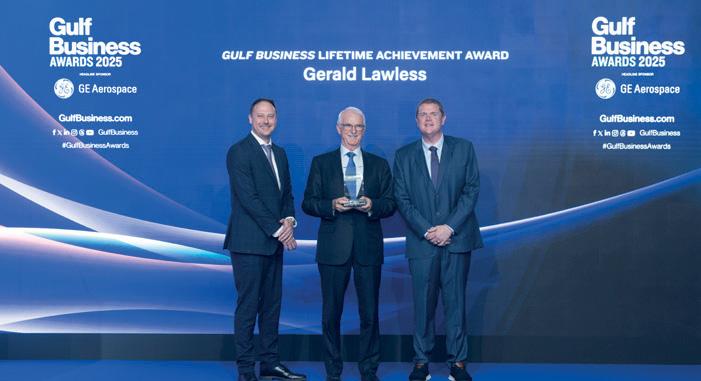

GULF BUSINESS LIFETIME ACHIEVEMENT AWARD
Gerald Lawless
LEADER AWARDS
BANKING LEADER OF THE YEAR
Rola Abu Manneh CEO, UAE, Middle East and Pakistan, Standard Chartered
ENERGY LEADER OF THE YEAR

Rasso Bartenschlager General Manager, Al Masaood Power


HEALTHCARE LEADER OF THE YEAR
Dr. Craig R. Cook
CEO, The Brain & Performance Centre, a DP World company

HOSPITALITY LEADER OF THE YEAR
Joe Nassoura General Manager, Fairmont Dubai



INVESTMENT LEADER OF THE YEAR
Bal Krishen Rathore Chairman, Century Financial Group
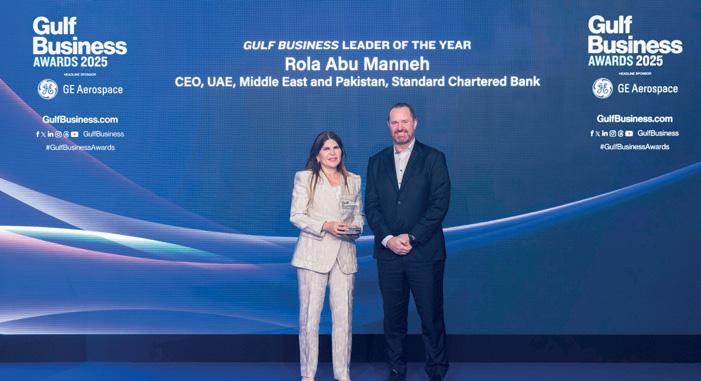
GULF BUSINESS LEADER OF THE YEAR
Rola Abu Manneh CEO, UAE, Middle East and Pakistan, Standard Chartered Bank
COMPANY AWARDS
BANKING COMPANY OF THE YEAR RAKBANK
ENERGY COMPANY OF THE YEAR
GE Vernova
HEALTHCARE COMPANY OF THE YEAR

LOGISTICS LEADER OF THE YEAR
Tarek Sultan Chairman, Agility Global


REAL ESTATE LEADER OF THE YEAR
Yousuf Fakhruddin CEO, Fakhruddin Properties

RETAIL LEADER OF THE YEAR
John Hadden CEO, Alshaya Group


TECHNOLOGY LEADER OF THE YEAR
Andreas Hassellöf Founder and CEO, Ombori

TOURISM LEADER OF THE YEAR
Mohamed Abdalla Al Zaabi Group CEO, Miral Group
TRANSPORT LEADER OF THE YEAR
Aster DM Healthcare
HOSPITALITY COMPANY OF THE YEAR
FIVE Hotels and Resorts
INVESTMENT COMPANY OF THE YEAR
AIX Investment Group
LOGISTICS COMPANY OF THE YEAR
AD Ports Group
REAL ESTATE COMPANY OF THE YEAR


Adel Mardini CEO, Jetex
Refad Real Estate Investment and Development Company
RETAIL COMPANY OF THE YEAR
Dubai Duty Free



TECHNOLOGY COMPANY OF THE YEAR
Crowe Mak
TOURISM COMPANY OF THE YEAR Miral Group
TRANSPORT COMPANY OF THE YEAR
Thrifty Car Rental


GULF BUSINESS COMPANY OF THE YEAR Miral Group
EDITOR’S CHOICE COMPANY AWARDS
DIGITAL TRANSFORMATION COMPANY OF THE YEAR

Etihad Salam Telecom Company
FINTECH PROVIDER OF THE YEAR OKX
MICE PROVIDER OF THE YEAR
Tahaluf
EDITOR’S CHOICE LEADER AWARDS
LEGACY IN LEADERSHIP
Masih Imtiaz CEO, Imtiaz Developments
CROSS-BORDER BUSINESS ICON OF THE YEAR
Capt. Pradeep Singh CEO and Founder, Karma Realty Developers
DISRUPTIVE LEADER OF THE YEAR
Dr Ali Asgar Fakhruddin CEO, Sterling Group


SEE THE EVENT COVERAGE





VISIONARY LEADER OF THE YEAR
Ankur Aggarwal Chairman and Founder, BNW Developments



WOMAN LEADER OF THE YEAR

Mila Semeshkina CEO and Founder, WE Convention


DISRUPTIVE COMPANY OF THE YEAR



Ultima Chain



FAMILY BUSINESS OF THE YEAR



Al Khayyat Investments (AKI)








An insight into the tech trends shaping the region with perceptive commentary and analysis


From AI to cybersecurity, the conversations shaping tomorrow’s digital economy will converge at GITEX Global 2025




20
Faster, smarter, local: How Trendyol is making its mark in the region
Trendyol’s president Çağlayan Çetin outlines the strategy powering the e-commerce company’s rapid rise in the Gulf and beyond
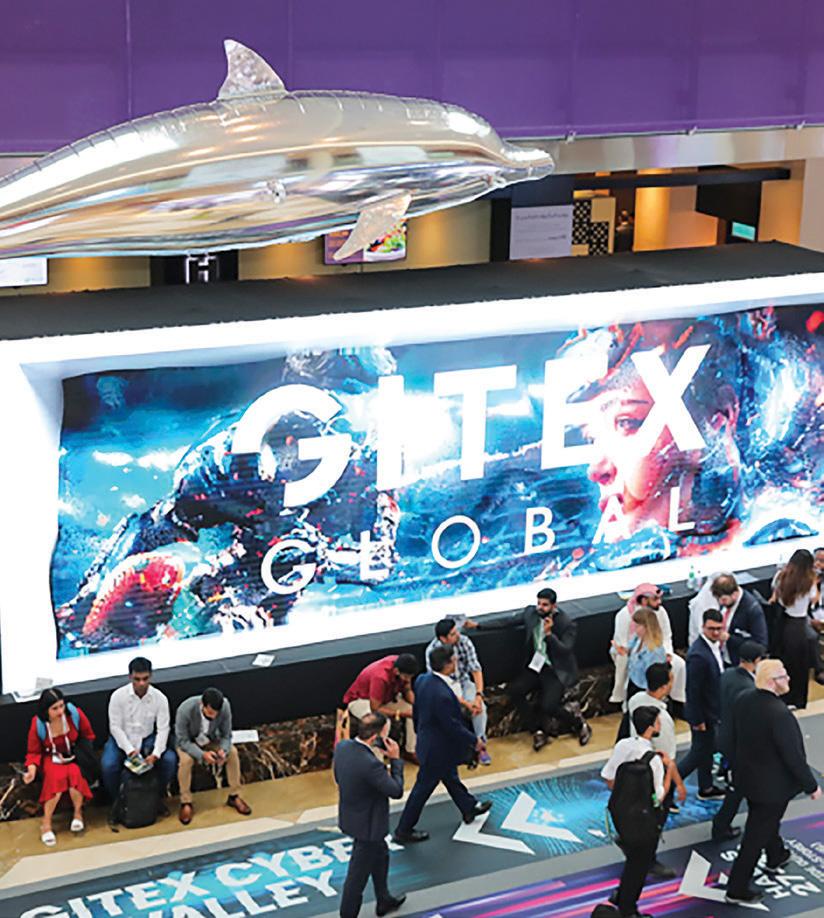

A ‘sovereignty-first’ strategy: Mohammed Retmi, VP of Sovereign Public Cloud at Core42, outlines how sovereign cloud is driving innovation, compliance, and the UAE’s push to be a global AI hub p.34
Editor-in-chief Obaid Humaid Al Tayer
Managing partner and group editor Ian Fairservice
Chief commercial officer Anthony Milne anthony@motivate.ae
Publisher Manish Chopra manish.chopra@motivate.ae
Group editor Gareth van Zyl Gareth.Vanzyl@motivate.ae
Editor Neesha Salian neesha.salian@motivate.ae
Deputy editor Rajiv Pillai Rajiv.Pillai@motivate.ae
Reporter Nida Sohail Nida.Sohail@motivate.ae
Senior art director Freddie N Colinares freddie@motivate.ae
Senior art director Olga Petroff olga.petroff@motivate.ae

Staying a step ahead: Paramount COO Ashok Chandrasekharan discusses rising AI-driven cyber threats in the Middle East and how businesses can build resilience p.30

The power of ‘instant’: Mashreq’s Kartik Taneja unpacks the future of real-time payments in the UAE p.38
General manager – production S Sunil Kumar
Production manager Binu Purandaran
Assistant production manager Venita Pinto
Digital sales director Mario Saaiby mario.saaiby@motivate.ae
Sales manager Hitesh Kumar Hitesh.Kumar@motivate.ae
X: @GulfBusiness Instagram: @GulfBusiness
Cover: Freddie N Colinares
HEAD OFFICE: Media One Tower, Dubai Media City, PO Box 2331, Dubai, UAE, Tel: +971 4 427 3000, Fax: +971 4 428 2260, motivate@motivate.ae DUBAI MEDIA CITY: SD 2-94, 2nd Floor, Building 2, Dubai, UAE, Tel: +971 4 390 3550, Fax: +971 4 390 4845 ABU DHABI: PO Box 43072, UAE, Tel: +971 2 657 3490, Fax: +971 2 677 0124, motivate-adh@motivate.ae SAUDI ARABIA: Regus Offices No. 455 - 456, 4th Floor, Hamad Tower, King Fahad Road, Al Olaya, Riyadh, KSA, Tel: +966 11 834 3595 / +966 11 834 3596, motivate@motivate.ae LONDON: Acre House, 11/15 William Road, London NW1 3ER, UK, motivateuk@motivate.ae

IN JULY 2025, GROUP-IB OBSERVED A SURGE IN QR CODE PHISHING ATTACKS AIMED AT CREDENTIAL THEFT, OFTEN IMPERSONATING EMPLOYEES AND SPOOFING ORGANISATIONAL IT INFRASTRUCTURE
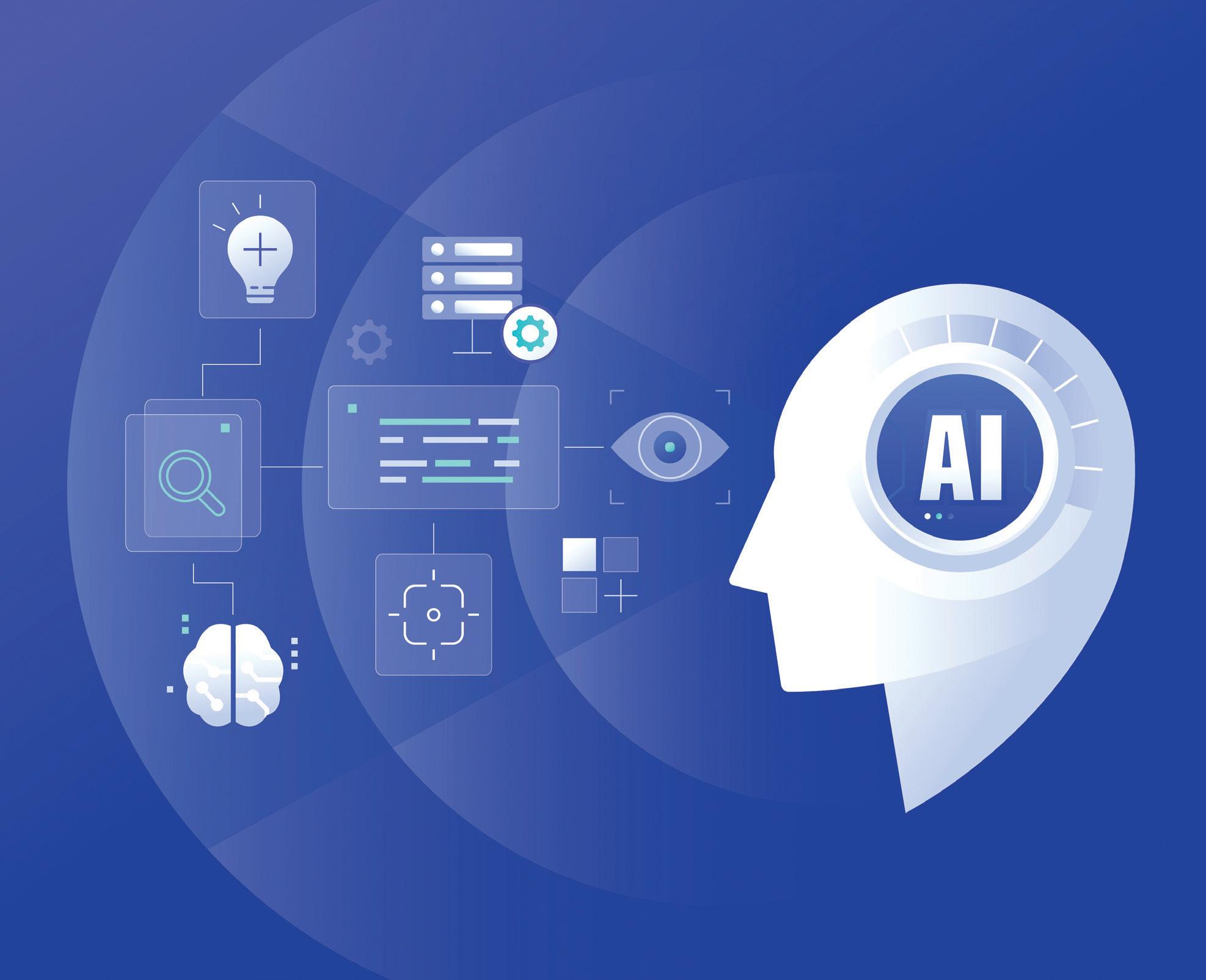

Artificial intelligence is changing work fast. Leaders who communicate openly and show real benefits can turn employee fear into engagement and growth
There is a good chance that your team at work has some anxiety about artificial intelligence (AI) and its place in your business. Upwards of 40 per cent of employees are afraid that AI will eliminate their job. You will at some point receive pushback from your employees as to why you are increasing reliance on AI, and maybe even why you could appear to be putting profits before people. Combating this pushback with tact and truth could be the difference between a harmonious and productive team, and one that gives up on you.

Though there is endless content available about AI and its positive impact on society, what grabs the headlines and garners clicks is fearmongering and doom. We have all witnessed how fast fear and rumors can spread through an office. The best way to combat this is to not let it happen. Work weekly with your team via communication on what you are using AI for, why you are using it, and what the unfiltered truth is. Don’t let doubts and questions hang in the air as to what “might” happen. Tell them directly what is happening and what the results will be.
A reported 67 per cent of decision makers are going to increase the use of AI at their company. This most likely includes you. Your team must be accepting and understanding of these coming changes or your systems will sputter at the starting line. This begins with leadership committing in the near and longterm to training and upskilling current staff. The more AI that is deployed, there must be an equal investment in training on what that AI does, why you are deploying it, what the end results will be, and how this will positively affect your teams and the company as a whole.
AI has the potential to improve employee productivity by 40 per cent, if deployed correctly to properly prepared teams. The use of AI will never reach its full effects if those using it everyday don’t know how to fully leverage it. Plus, the better they understand the workings of AI, and its potential impact, the less they will fear it and begin to understand and accept it as a tool for their benefit.
When pushback comes from the team about AI and how it may negatively impact them, don’t put your guard up. Remain open and receptive and keep your intake filter always running. Field every question and assuage every doubt by reinforcing that the AI you are using is to their benefit, not just the bottom line. Explain as many times as you need that the AI you are deploying, whether process automations or digital employees, has been created in service to the team. Artificial intelligence will not magically solve all of the issues facing a company. It is a powerful and dynamic tool to drive revenue and productivity, but it will only be as powerful as your team and you make it. Let the team know you need their thoughts on the
Yousef Khalili is the global chief transformation officer and CEO MEA at Quant, which develops digital employee technology
technology. Consider monthly or quarterly feedback sessions. What is working great, what is clunky, what do they still not quite understand? You don’t know what is effective and what is useless unless you get this feedback. Secondarily, your team will feel a part of the process, not just a bystander waiting to be displaced by technology.
Amidst the coming pushback on AI, refocus your team on the positive impact AI will have on their day-to-day, and their career growth and development. AI, and specifically agentic AI, will eliminate the majority of the repetitive and mindless tasks your team typically has to complete daily. Think data entry, fielding phone calls that require simple information, or ordering and stocking supplies. These will all be gone. That allows the team to become free to solve problems and challenges that need human creative thinking. Remember, AI, like Microsoft Office, or Adobe, is a tool. It cannot remove every challenge your company faces, but it will remove the ones that your people are wasting time and intellect on.
This will equate to free hours in their work week. What can they accomplish then? Present that question to them; if they never had to spend another minute on some repetitive mindless task, what could they do? What could they create? For people that want to grow and develop, those types of questions will almost guarantee buy-in.
You will get push back from your employees, I would be very surprised if you didn’t. But, as you have read here, there are far more positive possibilities for your team than negative ones. No matter what questions or challenges come from your team, face them head-on, with an open mind and free flowing dialogue. Make them feel heard and seen, and reinforce at every opportunity how they can leverage AI to grow within the company and in their careers. That is how you get buy-in and acceptance. That is how you drive your company forward.
IF DEPLOYED CORRECTLY TO PROPERLY PREPARED TEAMS
Lozano is the SVP of Network Infrastructure, MEA, Nokia
As AI investments surge across the GCC, energyefficient, high-performance networks are essential to unlock scalable, sustainable digital transformation

Artificial intelligence (AI) is rapidly becoming the cornerstone of economic transformation in the Gulf Cooperation Council (GCC). Backed by ambitious national visions across the GCC countries, such as the UAE’s National AI Strategy 2031, Saudi Arabia’s Vision 2030, and Qatar’s National AI Strategy, the region is witnessing unprecedented investments in cloud and AI infrastructure. Tech giants such as Microsoft, AWS, Google, META, and Oracle together with the key local players are fueling the acceleration of cloud computing and digitalisation across the entire GCC market.

But as data-driven digitalisation accelerates, it creates a profound dilemma: how can the GCC support rapidly increasing AI demands while ensuring its infrastructure remains scalable, agile, and resilient?
While AI’s benefits in driving innovation, efficiency, and economic diversification are evident, less visible is its profound impact on all layers of the network and the entire infrastructure. AI workloads consume exponentially more computing and networking resources, often 33 times more energy per task than traditional applications.
Globally, data centre energy consumption is projected by IDC to more than double between 2023 and 2028. Yet, much of the conversation around sustainable AI focuses narrowly on cooling solutions and energy sourcing, leaving the critical role of networks often overlooked. In the GCC, the growth is projected to be even more substantial, with the region expected to account for a significantly higher share of global data centre expansion during this period.
In reality, efficient network infrastructure can greatly increase both the environmental and economic positive impact of AI, and will accelerate its widespread adoption. This is key to securing the monetization of the huge investment required. Failing to address network infrastructure needs to satisfy the often-extreme SLA and UX requirements of AI and cloud services will slow the return of investment and therefore delay the rollout and accessibility of nextgeneration digital and cloud services.
Addressing GCC’s AI sustainability challenge requires a shift toward safer, smarter, AI-ready networks. As AI-driven applications surge, network efficiency and performance will become paramount. A smarter, AIdriven network infrastructure can minimise power usage, reduce latency, and optimse resource allocation, addressing energy consumption challenges at the root. Most importantly, it lays the foundation for unlocking the full benefits of AI-powered cloud services—ensuring they perform at scale, with speed, and in a more sustainable way. The new “premium digital services”, boosted by AI capabilities, require premium connectivity. Not just any connectivity suffices to meet the extreme requirements necessary to maximize the introduction and benefits of AI.
Innovations such as AI-powered network automation and intelligent routing and switching can significantly reduce unnecessary energy consumption. Leveraging predictive analytics, these solutions dynamically adjust to AI workloads in real-time, optimizing power usage while enhancing performance. We have witnessed firsthand how next-generation
AI WORKLOADS CONSUME EXPONENTIALLY MORE COMPUTING AND NETWORKING RESOURCES, OFTEN 33 TIMES MORE ENERGY PER TASK THAN TRADITIONAL APPLICATIONS
optical networking technologies, further advanced through recent industry consolidation and innovation in coherent optics, simultaneously enhance network capacity and reduce power consumption by up to 60 per cent. This reinforces the role of optical networks as a foundation for premium, future-ready connectivity. But the value of AI in networks extends far beyond operational efficiency. It enables faster time to market, improves user experience, and unlocks entirely new go-to-market models, making AI not just an optimization tool, but a powerful driver of innovation and business growth.
One of the most compelling advantages of intelligent resource allocation is its ability to unlock new business opportunities for service providers. By “exposing” their transport and access network resources, operators can share unused capacity with partners or third parties through automated, SLAguaranteed network-as-a-service (NaaS) models. This creates new revenue streams, whether by offering available transport capacity on demand, as seen in the WaveSuite Service Enablement use case, or by enabling local ecosystem players to build added-value services on top of home and premises networks, as demonstrated with Nokia Corteca.
Similarly, advanced fixed broadband chipsets, such as our Quillion-based solution, already deployed by 150 global network operators, consume 50 per cent less power compared to earlier generations, demonstrating that energy efficiency and high performance can coexist.
Strategic collaboration across the entire global and local ecosystem, including hyperscalers, service providers, enterprises, government agencies and technology vendors, is essential to scaling sustainable AI infrastructure. Whether it’s with global hyperscalers or enterprise technology providers, such partnerships ensure that cloud infrastructures — both public and private — are robust, energy-efficient, and ready for AI-driven business transformation.
As network demand intensifies, particularly at the edge, distributed AI processing becomes increasingly critical. Latency, energy usage, and data processing efficiency improve substantially by moving processing closer to users through intelligent, distributed networks. In this sense, smarter networks represent not only an efficiency upgrade but a fundamental shift in how AI applications are delivered.
Thys Bruwer is the consulting, data and analytics leader for Middle East and Africa at DXC Technology
The GCC’s unique assets such as ample renewable energy sources, visionary urban initiatives, and clear sustainability frameworks, provide fertile ground for sustainable digital growth. But the network is the unsung hero underpinning this sustainable transformation. Without smart, energy-efficient, and high-performance networks, “premium networks” even the most advanced AI applications risk becoming unsustainable.
Another key factor in the GCC’s digital landscape is its strategic global position, serving as a critical crossroads between Europe, Africa, and Asia. The region is already host to dozens of subsea cables, with more on the way, delivering hundreds of terabits per second of global data traffic. As data volumes surge, the need for diverse, resilient end-to-end routing becomes increasingly vital to prevent single points of failure and reduce latency.
At the same time, there is a sharp rise in security and privacy demands. It’s no longer enough to simply have fast, reliable connectivity — networks must be always-on, secure, and robust, even in the face of multiple simultaneous disruptions, whether caused by fibre cuts, hardware failures, or human error.
This is placing new expectations on service providers to deliver premium SLAs that go beyond traditional metrics like uptime, latency, and capacity, to also guarantee confidentiality, data integrity, and user experience. The potential of future quantum computers to break current encryption standards poses a long-term data security risk, often referred to as “harvest now and decrypt later (HNDL)”. As a result, quantum-safe encryption is increasingly being adopted across modern networks, implemented at both the IP and optical layers without compromising efficiency, performance or line speed. Meeting these expectations is driving a complete rethink of network design, from overall architecture down to the evolution of underlying components, such as advanced microchips. In short, delivering premium user experience under premium SLAs demands nothing less than a nextgeneration, AI-ready premium network built for resilience, security, and agility.
For the GCC to achieve its ambitious economic and digitalisation goals, networks must evolve proactively. By prioritising smarter ”premium networks”, in my view, the GCC region will lead the world in sustainable digital transformation; not only powering its AI ambitions but doing so responsibly, efficiently, and sustainably beyond the GCC geography. The choice of smarter networks today will shape the region’s digital and environmental

As
traditional outsourcing stumbles under regulation and cyber risks, the Middle East is turning to AI to power a smarter, faster model

In the Middle East, outsourcing is nothing new. For decades, the region has successfully tapped into global talent pools, particularly in IT, customer service and construction, to power its meteoric rise. From call centres in Cairo to coding teams in Bengaluru, companies here have long understood that skill doesn’t need to be in-house to be impactful. And with its strategic position between East and West, the Middle East has often acted as a hub, importing labour, exporting services, and bridging time zones. But over the past few years, traditional outsourcing has hit turbulence. Data sovereignty laws, privacy regulation, and heightened cybersecurity risks have made businesses more cautious. Tasks that were once moved offshore are now being scrutinised under a compliance microscope. The result? Some organisations have pulled back — only to discover the strain it places on operations and budgets. After all, a single in-country employee simply can’t replicate the cost-efficiency or sheer capacity of a small, outsourced team. Yet, the compliance risk of getting it wrong is too high.
Artificial intelligence (AI) is now stepping in — not just as a substitute for outsourced workers, but as an evolution of the entire business model. This is Outsourcing 2.0.
Where traditional outsourcing gave us access to human talent in other geographies, AI offers something altogether different: consistent, scalable systems that operate around the clock. AI doesn’t tire, doesn’t misplace data, and doesn’t call in sick. It processes tasks with unmatched speed and precision—and crucially, it learns. With built-in machine learning, these systems improve over time, becoming more aligned with a business’ unique needs.
Today’s most advanced AI platforms even integrate natural language processing (NLP), making humanmachine collaboration feel less like coding commands and more like conversation. Employees can ask, instruct and interact with AI in ways that feel intuitive, rather than technical. The potential applications are staggering. Generative AI and other emerging tools are already capable of automating work that eats up 60 to 70 per cent of employees’ time. The promise of Outsourcing 2.0 is clear. But delivering on that promise requires a thoughtful approach — one that’s both familiar and subtly different. Many of the same principles that underpinned traditional outsourcing still apply: clarity, alignment, and trust. Yet AI also introduces new dynamics that challenge established ways of working. Here’s how to strike that balance.
For those who’ve led traditional outsourcing efforts before, success with AI outsourcing will feel familiar in one important respect: it starts with asking the right questions. Just as a business wouldn’t outsource accounting or customer service without clear deliverables, applying AI begins with identifying where it can drive value. Which tasks are repetitive and rulesbased? Which decisions follow clear logic? Where is accuracy critical, and where is speed an advantage?
Organisations that take the time to define the right problems tend to find the right AI solutions. Those that don’t, often waste time experimenting with offthe-shelf tools that don’t fit their workflows — or worse, solve the wrong problem altogether.
AI isn’t a magic wand. Like traditional outsourcing, it succeeds when there’s clarity of scope, outcomes and accountability. The better the brief, the better the result.
Of course, AI introduces its own set of anxieties — just as traditional outsourcing once did. Back then, fears centred around losing control of the work,
compromising quality, or creating distance between leadership and delivery. With AI, the concerns are different, but just as personal. People worry about job displacement, algorithmic bias, and whether decisions made by machines can ever be fully trusted. These aren’t abstract ideas — they’re real human concerns, and they deserve honest engagement. What’s promising is that many of the safeguards companies once demanded of traditional outsourcing — audit trails, SLAs, data protections — can be baked into AI systems from the outset. AI models can be tested, monitored and made explainable. Data can be anonymised and securely managed. And rather than replace human judgment, AI can often serve to enhance it — surfacing patterns we might miss, or taking on the grunt work so we don’t have to. The most successful AI adopters aren’t the ones who rush to replace humans. They’re the ones who take people with them — training employees to work alongside AI, not against it.
And this is where Outsourcing 2.0 diverges from its predecessor: the shift isn’t just operational — it’s organisational. Traditional outsourcing let us hand over defined, linear tasks. AI forces us to rethink entire structures. Most companies today still operate like pyramids, with large bases of frontline workers supporting a narrower band of decision-makers. But AI is beginning to invert that model and enable a more complex series of interactions. As more routine tasks are automated or AI-assisted, we’ll see a rise in specialised, higher-value roles — and fewer traditional support functions. What emerges is a diamond-shaped structure, with a strong middle of experts, creatives and strategists. This restructuring doesn’t mean mass layoffs. It means reskilling. It means valuing critical thinking over task execution. And it means flattening hierarchies, so decisions can be made faster, and innovation can flow more freely.
The Middle East has always been pragmatic when it comes to getting things done — whether that’s through people, platforms or partnerships. With Outsourcing 2.0, the playbook is evolving, but the principles remain. Yes, AI mirrors the efficiency gains we once sought through traditional outsourcing. But it also demands something deeper: a reevaluation of how we structure, manage and trust our organisations.
If we get it right, AI won’t just help us do the same work faster or cheaper — it’ll free us up to do entirely new things. That’s not just outsourcing. That’s transformation.

As AI agents drive UAE’s economic growth, businesses must track task outcomes, value, governance, and performance to ensure reliable adoption
The UAE has become the region’s preeminent proving ground for artificial intelligence (AI). An Emirates NBD report predicts AI will contribute more than $96bn to the UAE’s GDP by 2031.
A large part of the growth is expected to be attributed to AI agents. Agents are different from other forms of AI in that they perform independently and make plans on their own. Their agility, powered by probabilistic reasoning, allows them to adapt while operating. While endowing agents with powerful capabilities, these differences make agentic AI more unpredictable than its predecessors, with the same

inputs yielding different outputs between runs. But agents have real-world dirham investments behind them, so how do adopters calculate ROI, or indeed assess in any meaningful way a technology that is so non-deterministic?
An AI agent has the potential to not only fail in the performance of its assigned task but to take unnecessary actions, leak sensitive data, and a range of other undesirable slip-ups. Meaningful evaluation of agents must go beyond traditional pass/fail results and incorporate all possible points of error. The goal is to rate performance on a quality scale that encompasses reasoning, adaptation, and value delivery. To avoid distasteful user experiences, non-compliance, latency, and budget waste – all risks that are run by a business that does not evaluate individual agents – I recommend five metric categories for the assessment of AI agents.
The success and quality of output of core tasks is as important a metric for agentic AI as it was for its predecessors. Evaluators must look for accuracy and reliability. Measure task completion rates of major workflows. Allow domain specialists to catalog the accuracy, precision, and compliance of outputs. Take
note of the frequency of errors, retries, and escalations. Adopt industry-standard benchmarks and incorporate human reviews to uncover problems with business-critical tasks. All measurements must be continuous to give opportunities for improvement over time.
User satisfaction and other tangible business gains must be goals for AI as they are for any other business asset. Agents may be accurate; they may be precise to 20 decimal places. But if they do not add value for end users, then formal evaluations must reflect that. Calculate time saved per workflow and compare it with an established baseline. Look at adoption and repeat usage rates and use Net Promoter Score (NPS) or satisfaction surveys tailored to interactions with AI agents. A/B testing can be used between agentic and traditional workflows. Follow the user journey and encourage feedback to discover pain points.
Assess the quality of reasoning of agents. Trace how they autonomously build workflows in real time. Do they make use of the right tools? Do they perform tasks in the optimal number of steps, and in the optimal order? By monitoring efficiency with this level of granularity, organisations also make systems more transparent. Additionally, assessors should note the frequency with which chains of reasoning are abandoned, so they must ensure they can trace these chains and visualise “agent trails”.
Trust is critical in an AI journey. Oversight ensures compliance; transparency, auditability, and safeguards enable oversight. Evaluation of an AI agent must include confirmation of its safe and ethical operation, as well as verification of its compliance and auditability. Instances of policy violation, bias, or undesirable outputs should be recorded.
AGENTIC AI IS POWERFUL ON PAPER, BUT DOES EACH AGENT FULFILL ENTERPRISE-GRADE WORKLOAD REQUIREMENTS? MEASURE LATENCY, UPTIME RATES, ERROR FREQUENCIES, COSTS PER INTERACTION, AND MODEL DRIFT.
AGENTS MAY BE ACCURATE; THEY MAY BE PRECISE TO 20 DECIMAL PLACES. BUT IF THEY DO NOT ADD VALUE FOR END USERS, THEN FORMAL EVALUATIONS MUST REFLECT THAT
Organisations must also find ways of assessing the auditability of decision-making and tool usage, as well as the effectiveness of safeguards. Red-teaming, guardrails and moderation systems can help, but it is also important to run regular automated safety tests and keep comprehensive audit logs.
Operational performance at scale must be evaluated if a full picture of the agent is to be seen. Agentic AI is powerful on paper, but does each agent fulfil enterprise-grade workload requirements? Measure latency, uptime rates, error frequencies, costs per interaction, and model drift. Always-on dashboards must be available and should flag anomalies as they emerge. Stress testing during peak usage is also crucial. Track costs at the user, team, and workflow levels to ensure they do not spiral out of control.
These metric categories form a framework for building trust — and hence, acceptance — of agentic AI over time. Throughout the course of the AI journey, agents will improve autonomously under the right conditions – careful monitoring across cycles of deployment coupled with expert-guided refinement. This approach is important because it helps ensure that metrics are aligned with business needs rather than arbitrarily defined AI benchmarks. IT, line-ofbusiness, and compliance teams must collaborate on evaluation. Without subject-matter experts, the evaluation of agentic AI will be insufficient to identify all business risks and relevant success criteria.
Agents must be safe and useful. As the growth of the field unfolds across the UAE, we will see more enterprises experiment with AI agents. Successes will accrue to those that introduce the right evaluation practices early. Those enterprises will enjoy confidence in more than just the accuracy and precision of their agents. They will know that they are reliable, safe, scalable, and transparent.

In volatile markets, what you earn matters but what you retain matters even more
By AIX Investment Group
In 2025, the world’s most successful investors are no longer focused on just “growth”, they are focused on smart growth. For high-net-worth individuals (HNWIs), the priority now is twofold: accelerate top-line revenue through forward-looking investments, and control the bottom line with discipline and precision.
At AIX Investment Group, we specialise in helping clients navigate both. With a global presence and significant assets under advisory, we are a trusted financial services firm committed to helping clients build sustainable wealth through tailored investment solutions and institutionalgrade offerings.
Top-line growth refers to increasing gross revenues. This translates to ensuring your wealth is not sitting idle but actively generating future value. For progressive investors, today’s market favors strategic allocation to nontraditional, high-performance asset classes that deliver both performance
and long-term growth potential. AIX Investment Group offers a range of multi-asset investment solutions centered around:
• Capital Protection Programmes, combining steady yield with downside protection through fixed income notes
• Alternative Strategies, such as real estate-backed securities and structured notes
Built for today’s market realities, each offering aims to beat inflation, protect your investment, and provide reliable income critical pillars for sustaining top-line growth over time.
We also believe in geographical and sectoral diversification, helping clients gain exposure to emerging markets, real estate, and infrastructure-linked assets categories that are positioned to lead global economic growth.
In volatile markets, what you earn matters but what you retain matters even more. Bottom-line control is about maximising profitability after expenses, taxes, and
fees. For investors managing large portfolios or family-owned businesses, small inefficiencies compound fast impacting overall returns.
At AIX, we emphasise:
• Efficient structuring
• Regular portfolio rebalancing
• Investment strategies with built-in downside protection
• Transparent advisory
Partnering with industry-leading experts, we deliver exceptional solutions that empower investors to maintain control and full visibility throughout their financial journey.
With a presence in the UAE and Europe and diverse clientele that includes private investors, entrepreneurs, and global families, AIX Investment Group is more than a financial advisory firm, we are a strategic partner in wealth creation.
Our commitment to trust, transparency, and tailored solutions is reflected in our multi-award-winning reputation and our approach to capital preservation. Every offering is backed by rigorous due diligence, regulated structures, and a focus on long-term impact.
“In today’s complex global environment, individuals need more than just growth they need precision, protection, and purpose. At AIX Investment Group, our mission is to provide strategies that not only grow our clients’ capital, but preserve their legacies. That’s the difference between good returns and great results,” says Fadi Dabbagh, president of the board, AIX Investment Group.
This year, growth isn’t just about numbers on a spreadsheet. It’s about growth with purpose aligned with personal goals, lifestyle ambitions, and long-term legacy planning.
To succeed you must master the art of growing smarter, not just bigger. With top-line strategies and strong bottom-line control, investors can navigate the complexities of today’s financial world with confidence and clarity.

BY NEESHA SALIAN
DR EMAD
FAHMY
Director of Systems Engineering, Middle East, NETSCOUT
NETSCOUT plans to address current cybersecurity trends at GITEX Global 2025, such as the rise in multi-vector DDoS attacks

across the Middle East. The company will introduce updates to its adaptive DDoS protection systems, designed for telecom operators and businesses facing daily network disruptions. A key offering is the observability and control interface (OCI), presented as adaptive threat analytics (ATA). For telecom firms, it integrates with traffic management systems (TMS) to monitor and respond to threats in real time. Businesses can use it alongside arbor edge defence (AED) for automated protection against evolving risks. GITEX Global provides the ideal platform for these demonstrations, as it brings together government stakeholders, enterprises, and industry leaders. Attendees will see live demos showing how hidden devices are identified and secured in.

Globally, the talk of pilots is quietening as AI moves from proof-of-concept into production, and that demands new thinking about data. At GITEX Global, we’ll show
how enterprises and government teams can unify all their data into a single, sovereign platform that feeds AI systems with accuracy, scale, and trust. This is about moving beyond experimentation into AI that delivers real outcomes.
This year we’re introducing our newly launched VAST AI Operating System to the Middle East, including services like InsightEngine for real-time retrieval, AgentEngine to simplify enterprise AI adoption, and SyncEngine, a universal data catalog and migration tool. These innovations are cutting edge, designed to eliminate silos and make data AI-ready from day one, wherever it resides. And with the world now exploring what super intelligence might mean, these capabilities are essential foundations for the journey ahead.
GITEX Global has always been the proving ground for digital transformation in the Middle East and beyond. Today, it is also where the global conversation on AI is taking shape, and in particular this year a focus on sovereign systems. We expect very forward-thinking discussions here, from practical enterprise adoption to the long-term implications of super intelligence, and that makes GITEX the perfect stage for VAST to showcase how data infrastructure underpins both.
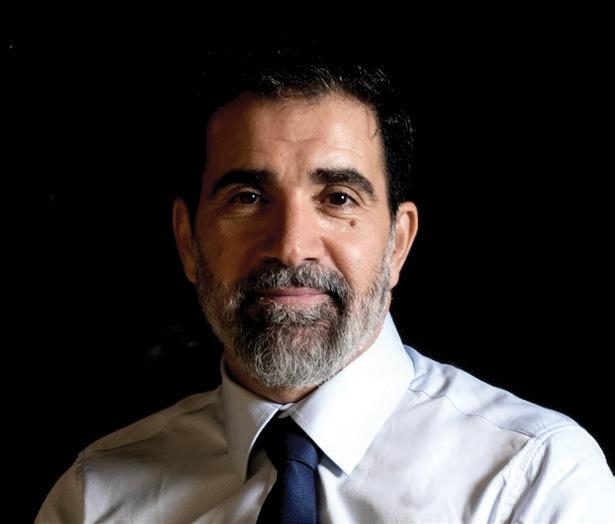
OSAMA ALZOUBI VP, MEA, Phosphorus Cybersecurity
Discussions at GITEX Global will focus on AI-driven defence mechanisms, data protection frameworks, and the rise of sovereign AI stacks that reduce dependence on foreign infrastructure. As every nation embeds AI deeper into critical infrastructure, cybersecurity becomes the frontline issue.
GITEX HAS ALWAYS BEEN THE PROVING GROUND FOR DIGITAL TRANSFORMATION IN THE MIDDLE EAST AAND BEYOND. TODAY, IT IS ALSO WHERE THE GLOBAL CONVERSATION ON AI IS TAKING SHAPE.
Phosphorus will present its Unified xIoT Security Management Platform, built to discover, secure, and monitor IoT, OT, IIoT, and IoMT devices. Key capabilities include device-aware discovery, automated remediation of weak credentials and outdated firmware, and continuous governance aligned with UAE and Saudi requirements.
GITEX Global provides the ideal platform for these demonstrations, as it brings together government stakeholders, enterprises, and industry leaders. Attendees will see live demos showing how hidden devices are identified and secured in real time, with records generated for compliance.
MARC DOMENECH Regional director, Enterprise, META, NVIDIA
At GITEX Global, NVIDIA is looking forward to unveiling breakthrough technologies that are shaping the future of AI and data infrastructure in the region. Our latest DGX systems and full-stack data centre solutions are designed to democratise AI,

enabling businesses of all sizes to build intelligent applications that perceive, reason and act.
We are also showcasing NVIDIA Cosmos platform, which is revolutionising robotics training through synthetic data that is critical for advancing smart infrastructure and automation. GITEX is a strategic platform for us to deepen relationships across our partner network, engaging with vendors, distributors, and system integrators to showcase integrated AI solutions from cloud to edge. This event is not just about showcasing technology but building the ecosystem that will drive long-term growth across the META region.
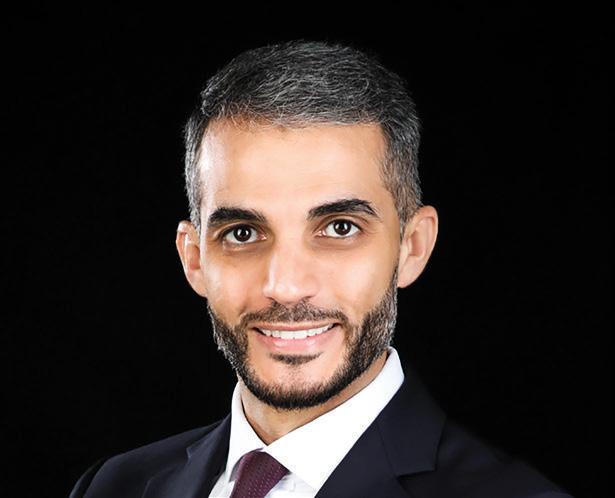
Ahead of GITEX Global, we are focused on several critical industry trends, primarily centered around the evolution and industrialisation of artificial intelligence (AI). First, we see a significant push towards sovereign AI and the development of national-level AI factories. Second, this AI adoption is enabling the rise of robotics, automation, and physical AI. Finally, these powerful trends are creating two significant infrastructure challenges. They place immense demands on data centres to manage power consumption and heat efficiently. Simultaneously, networking has become pivotal, as it must provide the high-throughput, low-latency connectivity and robust cybersecurity required to secure these advanced AI workloads. HPE is uniquely positioned to help organisations harness these trends with our comprehensive edgeto-cloud strategy.

BY NEESHA SALIAN
As GITEX Global 2025 approaches, the region’s tech leaders agree on one thing: the Middle East is shifting from hype to hard execution. Cloud and AI are scaling fast, ransomware is making cyber resilience nonnegotiable, and sovereign cloud has become a boardroom priority. Agentic AI is emerging as the next big force, promising to rewire workflows and unlock new revenue streams, while pragmatic AI agents are already cutting costs and freeing up talent. From industrial AI and digital twins to monetising intelligence through data-driven services, the Gulf’s agenda is now clear — resilience, sovereignty, and value creation sit at the core of digital transformation, and the pace of adoption will define who leads in the decade ahead.
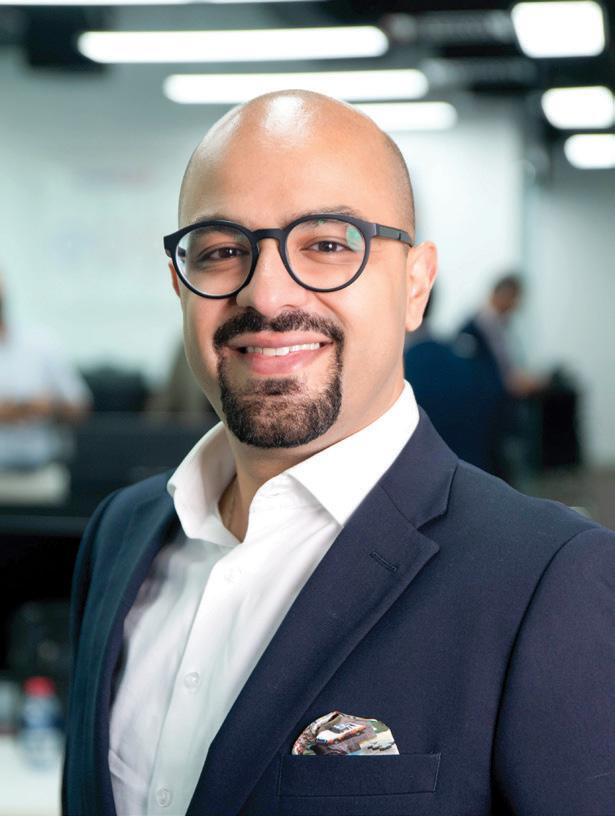
Regional VP - EMEA East, Veeam
As we approach GITEX, several transformative trends are shaping the technology landscape across the Middle East region. The acceleration of cloud adoption is enabling organisations to scale rapidly and innovate with agility, while the proliferation of AI is driving smarter automation and deeper insights across sectors. At the same time, the surge in ransomware and cyber threats is prompting businesses to prioritise data resilience and invest in robust backup and recovery strategies.
We’re also seeing a growing emphasis on regulatory compliance, with governments introducing new frameworks to safeguard digital assets and ensure business continuity. The convergence of hybrid work models and digital transformation is pushing organisations to rethink their IT architectures, making flexibility and security top priorities. Looking ahead, I expect the coming year to be defined by proactive cyber defence, increased collaboration between public and private sectors, and a relentless focus on operational resilience. Companies that embrace these trends - by leveraging cloud, AI, and advanced data protection - will be best positioned to thrive in a dynamic and competitive environment. At Veeam, we’re committed to empowering our customers with the tools and expertise they need to stay resilient and secure in the face of evolving challenges.
ONE OF THE MAJOR TRENDS WE’RE SEEING IS AROUND AI, AND WE ARE LUCKY TO BE LIVING IN THE UAE WHICH IS LEADING THE FOREFRONT OF THIS INNOVATION AND AIMING TO BECOME AN AI POWERHOUSE GLOBALLY. WITH THE RISE OF AGENTIC AI, IT HAS BECOME RELATIVELY EASY FOR ANYONE TO BUILD IMMERSIVE EXPERIENCES AND CHANGE THE WAY CONSUMERS AND COMPANIES INTERACT.
WILLIAM O’NEILL
Area VP and GM GCC, ServiceNow
By 2030, agentic AI will be the most transformative force across the region’s public and private sectors. These intelligent systems will fundamentally change how services are delivered, how operations are managed, and how organisations create value.
At ServiceNow, we’re preparing for this future by reimagining our platform for the agentic and open era. The new ServiceNow AI Platform brings together any AI, any agent, and any model to work across the enterprise, unifying intelligence, data, and workflows. Our AI Control Tower provides a central command centre for managing AI strategy, governance, and performance, while our AI Agent Fabric enables seamless communication between ServiceNow and third-party agents to drive coordinated, outcome-based automation.

We’re also investing in real-time data ecosystems through our Workflow Data Network, ensuring AI agents have access to the insights they need to act intelligently and responsibly. And through ServiceNow University, we’re helping to close the AI skills gap by training millions of learners in the capabilities needed to thrive in an AI-powered world.
One of the major trends we’re seeing is around AI, and we are lucky to be living in the UAE which is leading the forefront of this innovation and aiming to become an AI powerhouse globally. With the rise of agentic AI, it has become relatively easy for anyone to build immersive experiences and change the way consumers and companies interact. The bigger and more beneficial use of AI will come from its

enterprise application. With esnterprise AI, it can be a theory, a dream, or it can be a real strategy within the organisations; yet we are still seeing many companies falling behind in this regard. Our outlook remains very bullish when it comes to AI, because there are companies out there making it easy – Nutanix being one of them. The key question will be how fast organisations can build, implement, but most importantly govern AI applications in order to gain competitive advantage.
As demand for AI, HPC and GPU-as-aservice capabilities accelerates across the region, success now depends on data, not just algorithms or compute. The global drive for AI gigafactories and increased global awareness of data sovereignty capabilities has amplified concerns around where data resides.
Moreover, geopolitical uncertainty, the threat of foreign influence over data, and regulatory pressure mean organisations in the Middle East are increasingly focused on data sovereignty. The risk of service disruption is no longer theoretical, and organisations need to consider who has access to their data. Many are grappling with how to balance customer demands, maintaining control and keeping access to innovative technology. These issues are top of mind for business leaders who need to take action to ensure continuity

THE RISK OF SERVICE DISRUPTION IS NO LONGER THEORETICAL, AND ORGANISATIONS NEED TO CONSIDER WHO HAS ACCESS TO THEIR DATA. MANY ARE GRAPPLING WITH HOW TO BALANCE CUSTOMER DEMANDS, MAINTAINING CONTROL AND KEEPING ACCESS TO INNOVATIVE TECHNOLOGY.
of service, no loss of customer trust and compliance with local legislation.
Pure Storage enables organisations to navigate this complexity with an architectural approach encompassing hardware, software and services that deliver transparency, agility, and are future-proofed to meet digital strategies.

SASCHA GIESE
Global tech evangelist, observability, SolarWinds
AI continues to be a dominant trend. In the past two to three years, we saw organisations aspire towards artificial general intelligence (AGI), but enthusiasm has been tempered by the fact that it remains too expensive and outcomes often do not justify the cost. More recently, emphasis has shifted to AI agents, which involve
applying AI to a more defined scenario, a sandbox, if you will, so efficiency is higher while costs remain controllable.
AI agents allow us to “outsource” specific tasks to machines with a low risk of failure. What does this mean for IT? It enables organisations to reduce operational expenses and provides support in regions where talent acquisition is challenging. Crucially, it also allows IT professionals to focus on improving the business instead of spending their time firefighting.
If AI agents are deployed smartly and sustainably, they could create a winwin situation for both businesses and employees.
WALID GOMAA CEO, Omnix International
AI has evolved beyond being a support tool and is now a revenue enabler.
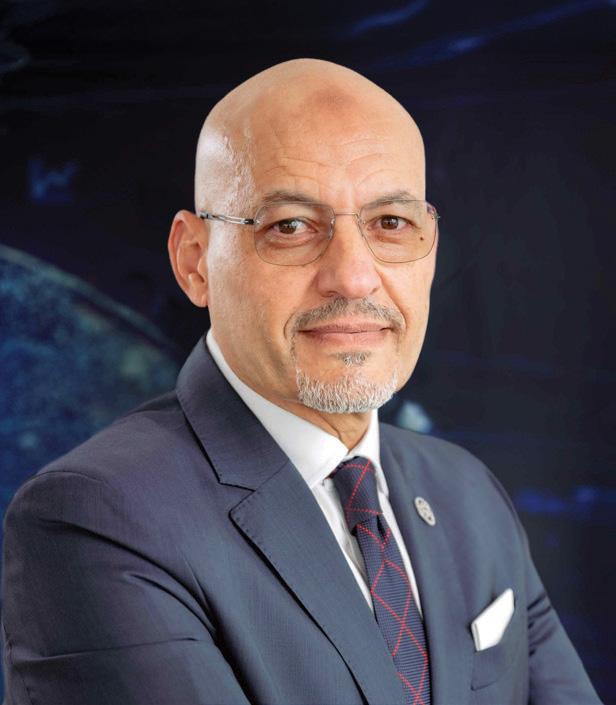
Organisations can monetise AI by embedding it into products and services through personalised customer experiences, predictive insights, and AI-driven automation that delivers measurable value. Beyond cost savings, AI creates entirely new revenue streams such as data-as-aservice models, intelligent platforms, and outcome-based services.
True monetisation happens when AI solutions are tied directly to measurable outcomes. From ideation to value realisation, organisations must identify high-impact use cases, tailor solutions to industry challenges, and define clear ROI. This approach transforms not just technology but also operating models, governance, and long-term capabilities.
VIJAY JASWAL CTO, APJMEA, IFS
Industrial AI is expected to evolve significantly over the next five years. Embedded
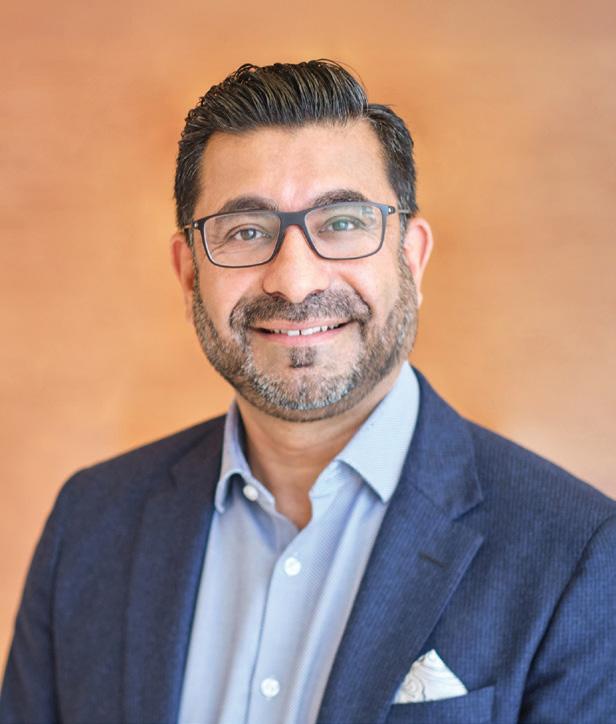
AI will become standard across enterprise systems, supporting decision-making in areas such as maintenance, supply chain, and customer service.
Agentic AI is likely to play a growing role in shaping autonomous and adaptive operations. These systems could eventually adjust production schedules in real time, manage supply chain disruptions, or optimise asset performance without human intervention.
AI will also increasingly integrate with IoT and digital twins to provide real-time insights and predictive capabilities. Cloud-based AI services will make advanced tools more accessible to midsized enterprises.
The return on investment will come from improved asset utilisation, lower operational costs, faster decision-making, and enhanced service delivery. These benefits will help businesses become more resilient, efficient, and competitive.
ASOKAN
MOODLEY
Head of GenAI and Industry Advisory for MEA, NTT DATA
Artificial intelligence is rapidly transforming industries across the Middle East as organisations embrace innovations that blend advanced frameworks, modern infrastructure, and sector-specific applications. Businesses are increasingly deploying intelligent agents at scale, automating tasks, enabling real-time voice interactions, and orchestrating processes with speed and ethical integrity through platforms such as Microsoft 365 Copilot and Azure AI Foundry. At the same time, enterprises
TRUE MONETISATION HAPPENS WHEN AI SOLUTIONS ARE TIED DIRECTLY TO MEASURABLE OUTCOMES. FROM IDEATION TO VALUE REALISATION,
INDUSTRY-SPECIFIC AI SOLUTIONS ARE ALSO GAINING TRACTION, WITH HYPERSCALERS SUCH AS GOOGLE CLOUD CO-DEVELOPING TAILORED TOOLS FOR BANKING, INSURANCE, RETAIL, AND HOSPITALITY, FROM A VIRTUAL TRAVEL CONCIERGE POWERED BY GEMINI MODELS TO REGLA.
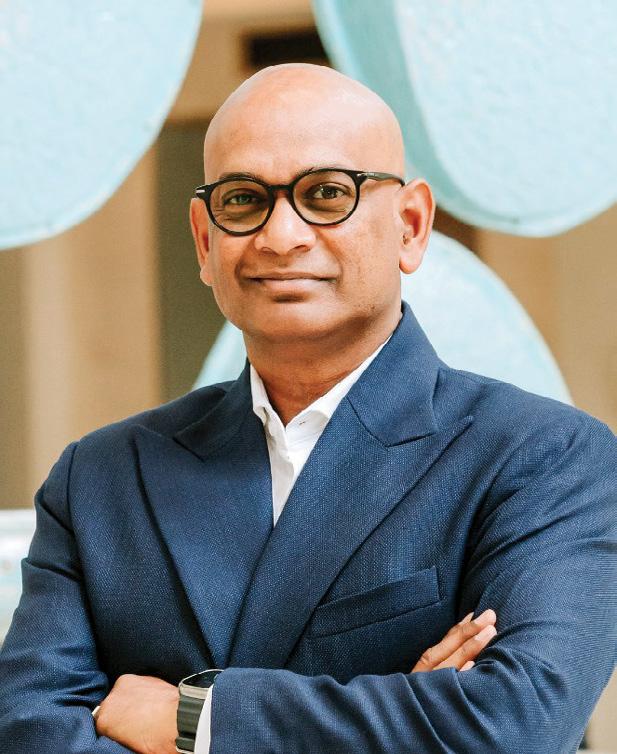
are modernising legacy systems in partnership with providers like Cisco, creating adaptive, AI-ready networks that support anomaly detection, self-healing capabilities, and secure connectivity across healthcare, manufacturing, and financial services. Industry-specific AI solutions are also gaining traction, with hyperscalers such as Google Cloud co-developing tailored tools for banking, insurance, retail, and hospitality, from a Virtual Travel Concierge powered by Gemini models to Regla, a compliance solution for financial services. To anchor these advances in trust and regulation, governments and highly regulated sectors are increasingly adopting sovereign cloud strategies with partners including Microsoft and Google, ensuring data residency and compliance while unlocking the full potential of AI innovation.
FROM REDUCING DELIVERY TIMES THROUGH REGIONAL WAREHOUSES TO ENABLING ARABIC-LANGUAGE DISCOVERY AND CURATED PRODUCT COLLECTIONS, TRENDYOL GROUP IS RAISING THE BAR FOR E-COMMERCE IN THE MENA REGION. IN AN EXCLUSIVE CONVERSATION, PRESIDENT ÇAĞLAYAN ÇETİN UNPACKS THE COMPANY’S GROWTH STRATEGY
WORDS: NEESHA SALIAN






In the rapidly evolving world of digital retail, Trendyol has emerged as a name to watch. Founded in Türkiye in 2010, the company has since grown into a decacorn with a $16.5bn valuation in 2021 and a global customer base currently exceeding 40 million.
Now, Trendyol is making waves in the Gulf, leveraging a decade of technological expertise, local partnerships and deep consumer insight to reshape e-commerce in the region.
As Trendyol debuts as a sponsor of GITEX Global 2025, taking the stage on October 15th to showcase its advanced use of AI, its presence signals a clear intent: to successfully transplant and scale its technological know-how across the MENA region. Here, president Çağlayan Çetin talks to Gulf Business about Trendyol’s ambitious expansion, unwavering commitment to SMEs and the massive technological investments shaping its next decade.
Trendyol entered a competitive Gulf market with a proven model honed over a decade in Türkiye. “Our focus as an online marketplace lies in giving customers the right product at the right price and providing sellers with the tools and insights to scale at pace,” Çetin states. This strategy has resulted in a market-leading platform supporting over 250,000 merchants and serving more than 30 million domestic customers with a diverse, multi-category offering across fashion, beauty, homewares, accessories and electronics enhanced by an AI-supported shopping experience. It has also enabled the company’s international roll out into Germany,
Our focus as an online marketplace lies in giving customers the right product at the right price and providing sellers with the tools and insights to scale at pace.”
Azerbaijan, Central and Eastern Europe, and the Gulf, successfully acquiring over nine million more customers.
In the Gulf, Trendyol has secured more than 3.7 million customers, a figure underpinned by local teams, dedicated offices and regional warehouses. The marketplace model is the undeniable engine of this success, generating 85 per cent of regional revenues.
Çetin is emphatic about the role of local businesses: “We currently have 5,000 local
sellers on board... That shows one thing very clearly, local businesses are at the heart of our strategy and we expect to grow that local seller number exponentially before the end of the year.”
With 35 per cent of all products on the platform being sold by fast growing local brands and SMEs, Trendyol is rapidly transforming into a truly indigenous platform.
Trendyol’s aggressive expansion across the Gulf is built upon a hyper-localisation strategy driven by deep, market-specific insights from the region’s two largest digital leaders, Saudi Arabia and the UAE. President Çetin is clear on the fundamental rule for success: “You cannot operate from a distance.” This imperative has shaped the company’s approach, necessitating heavy investment in local infrastructure, local people and alliances.
Saudi Arabia quickly became the company’s vital launchpad, now standing as its largest international market and the source of 75 per cent of all regional orders. The team’s early experience revealed a key behavioural insight: online shopping in the kingdom is highly discovery-led. “People do not always open apps looking for one specific product. They want inspiration, they want to browse, they want to discover new brands,” Çetin explains. This understanding is crucial, directly informing Trendyol’s intense focus on curation, local content, and highly relevant collections. To serve this immense demand, the company has established local offices and fulfillment centers to reduce delivery times and expanded local teams to provide sellers with hands-on support for onboarding, inventory management, and scaling operations nationwide.
The UAE, by contrast, presents a broader, more diverse shopper base that primarily values variety and a seamless digital experience. The company responded swiftly by investing in a dedicated warehouse, office, and team, which has significantly cut delivery times and bolstered customer trust. Across both Saudi Arabia and the UAE, the core strategy remains the same: investing deeply in local infrastructure, local teams, and strong local partnerships to ensure the experience is optimised for both shoppers and sellers. Trendyol’s vision extends beyond the GCC core as it prepares to establish a ‘Digital Silk Road’. Leveraging Türkiye’s geographical proximity and its technological capabilities, the company is preparing to expand services to Iraq and is also exploring the possibility of extending its services to Syria, aiming to contribute constructively to those countries’ e-commerce ecosystems. This expansion also includes a significant logistical development: utilising a new transit land route through Iraq that will enhance delivery options for Saudi Arabia and other GCC countries. “This development marks a significant step in expanding our delivery options,” Çetin states, underlining their commitment to regional connectivity and scale. For Trendyol, localisation is foundational, not optional, and is continuously supported by technology and deep partnerships.
“Localisation is key to our success. It’s about how we present ourselves, it’s about how we communicate, it’s about the type of product we offer, as well as, of course, the type of companies that we partner with to best serve our customers,” Çetin states. This commitment manifests through the following approaches:
• Cultural and tech adaptation: The platform offers full Arabic support, local customer service, and relevant payment and
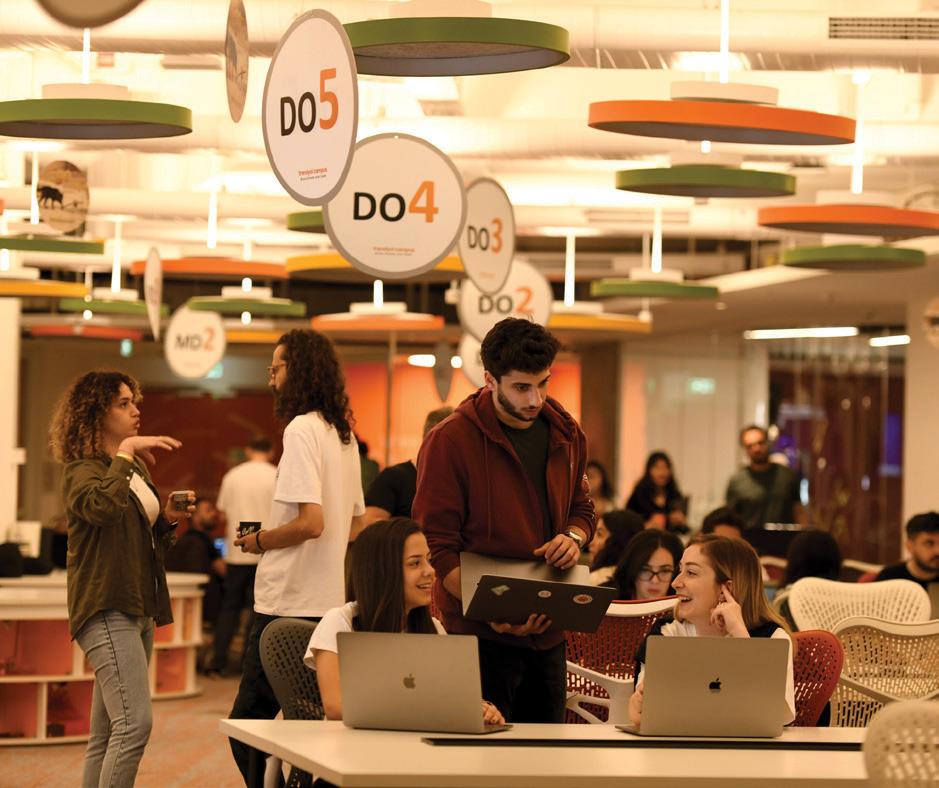
delivery options. To empower cross-border sellers, Trendyol has armed them with Türkiye’s first large language model (LLM), enabling seamless translation of product details. The product mix includes Trendyol’s beloved own brand, Trendyol Collection plus curated seasonal capsules, modest wear collections and ranges from some of the biggest local and international brands, balancing cultural relevance with global trends.
• Social commerce: The company has cultivated one of the region’s largest influencer networks, partnering with over 15,000 creators across Instagram, Snapchat, and TikTok. Çetin notes that these experiences, “powered by digital storytelling and an intuitive app, drive acquisition and build emotional connections that keep customers coming back.”
SMEs are an “absolutely integral part of our platform,” Çetin emphasises. Trendyol helps them flourish by unlocking audiences and providing scale. The digital Seller Center gives merchants full autonomy over their operations, from inventory and pricing to campaigns and payments, while equipping them with real-time insights to make smarter business decisions.
The company has cultivated one of the region’s largest influencer networks, partnering with over 15,000 creators across Instagram, Snapchat, and TikTok
Çetin uses a personal story to illustrate this impact: “I give the example of my local barber, who has one shop in Istanbul and is now selling his well-regarded hair lotion on Trendyol, across the world.”
This ambition is magnified through strategic collaborations, such as with Zid, which connects Trendyol directly with thousands of Saudi SMEs, and Monsha’at, the Saudi SME authority, for building trust and facilitating seller onboarding. “From female-led fashion
startups to independent home décor businesses, we’ve seen thousands of entrepreneurs use Trendyol as their launchpad. For us, helping SMEs succeed is central to how we contribute to the region’s digital economy,” he adds.
With a dedicated tech team of more than 2,000 people, Trendyol’s identity as a tech-powered business ensures that innovation is not an add-on but rather is embedded in every customer and seller interaction. Çetin confirms this strategy: “As a tech-powered business, AI is embedded in everything we do, shaping both the customer experience and the seller journey.”
For customers, AI ensures shopping feels instinctively personal, offering curated product recommendations, powering smoother, native discovery in Arabic, and even generating culturally relevant items like their AI-designed modest wear collection. For sellers, the technology is an empowerment tool, providing crucial real-time insights for demand forecasting, competitive pricing, and efficient inventory management. Furthermore, AI simplifies the onboarding process for local SMEs with real-time translation tools, allowing them to list products quickly and accurately. The investment in technology directly correlates to customer trust and loyalty.
Logistical improvements have been dramatic: by establishing local warehouses in Saudi Arabia and the UAE and partnering with last-mile providers like Aramex, Starlink, and Saudi Post, Trendyol has reduced initial delivery times from up to nine days to approximately four days, significantly increasing reliability. This proximity ensures returns are managed efficiently, a crucial trust factor. Çetin stresses, “Trust absolutely drives loyalty so ensuring we have a great experience is vital,” a commitment upheld by the Trendyol Assistant, an AI-driven virtual agent that handles customer queries quickly and accurately in multiple languages.
Beyond operational efficiency, Trendyol is committing capital to build the foundational infrastructure for future dominance. The company is securing its digital ecosystem through three major strategic investments. First, a landmark partnership with Castle Investments is underway to build a $500m, 48MW data centre in Ankara, which will provide the necessary immense capacity and secure data management to ensure optimal performance and scalability for their 40 million-plus customers. Second, alongside partners ADQ, Ant International, and Baykar, Trendyol is actively developing a fintech platform in Türkiye to potentially offer AI-powered digital payments, loans, deposits, and insurance. Finally, they are evaluating developing their own cloud business with the crucial support of their strategic investor, Alibaba’s AliCloud, which will further support AI-driven product development plans.
Çetin shares that these wide-ranging investments prove their commitment is long-term: “Together, these initiatives show that we’re not just building for today’s needs; we’re laying the foundations for the next decade of digital commerce right across the broader region.”
• Founded: In 2010 in Istanbul
• Market footprint: Türkiye plus 35 international territories
• Product: Multi-category including fashion, accessories, beauty, homewares, electronics
• Customer base: More than 40 million
• Status: Decacorn (valuation in 2021: $16.5bn)
Technology core: More than 2,000 tech staff; AI embedded in customer and seller experience
Marketplace scale (Türkiye)
Over 250,000 merchants
30 million domestic customers
• Hyper-localisation
• SME empowerment
• Technology
• Large-scale investments

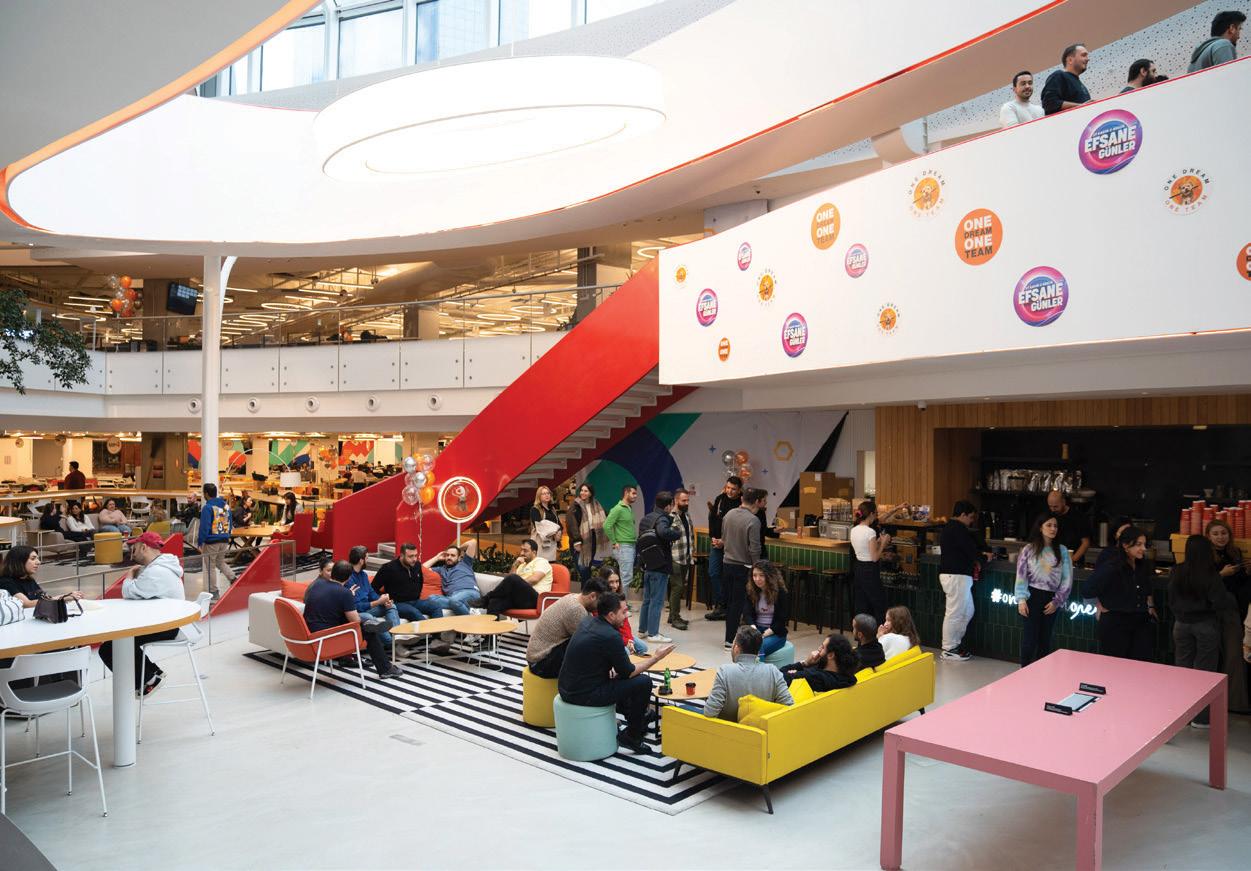
From female-led fashion startups to independent home décor businesses, we’ve seen thousands of entrepreneurs use Trendyol as their launchpad.”
Ça ğ layan Çetin , president of Trendyol Group, will speak about the group’s use of AI on Wednesday, October 15, 12pm at GITEX Global 2025.
Fun and fashion: Attendees visiting Trendyol’s stand at GITEX Global can take a photo there and instantly see Trendyol pieces that match their style. Trendyol staff will also be present to explain the benefits of being on the platform.
The future of e-commerce in MENA is not a distant prospect, but a landscape actively being shaped by three pivotal trends: personalised shopping experiences, advanced technology integration, and influencer marketing. Recognising that the Gulf is an intensely mobile-first, socially-driven market, Trendyol has built its acquisition and retention strategy on authentic digital storytelling and cultural resonance. This approach is best exemplified by the company’s powerful social commerce engine, which leverages a vast network of over 15,000 creators across Instagram, Snapchat, and TikTok.
By meeting customers “where they are on their phones, in their feeds, and in their cultural moments,” Trendyol drives organic engagement, acquisition, and the emotional connections that keep shoppers returning. This commitment to continually evolving the platform through AI-driven applications underscores their positioning to lead the market.
Trendyol’s major sponsorship at GITEX Global 2025 and Çetin’s dedicated session on the use of AI only serves to underscore this momentum and belief in the platform’s scalability. Ultimately, Çetin emphasises the long-term vision: “By focusing on customer satisfaction, technological advancement, and sustainable local investment, we’re confident Trendyol is well positioned to thrive in the fast-changing e-commerce landscape and continue supporting both sellers and shoppers across the Gulf.”
Trendyol is not just competing in the market; it’s actively working to lead its digital transformation.

ABDULLAH MOHAMMAD KHORAMI, CBO OF ETIHAD SALAM TELECOM, IS DRIVING SAUDI ARABIA’S DIGITAL TRANSFORMATION, USING AI, 5G, AND CLOUD TO POWER SMART CITIES, HIGH-SPEED NETWORKS, AND NEXT-GEN INNOVATION ACROSS KEY SECTORS
How is Etihad Salam Telecom contributing to Saudi Arabia’s digital transformation?
Etihad Salam Telecom is a key enabler of Saudi Arabia’s digital transformation, aligning closely with the goals of Vision 2030. The company is actively modernising its infrastructure and services to support sectors like healthcare, transport,
utilities, and retail through advancements in AI, 5G, and cloud technologies, reinforcing its role in shaping the Kingdom’s digital future. Its strategic focus includes operating pivotal data centers in Riyadh, Al Khobar, and Jeddah, and expanding high-speed broadband and fiber-optic services to support smart homes and digital lifestyles.
Etihad Salam has been awarded Ookla Speed Test for Saudi Arabia’s Fastest Internet Provider four times in a row and Saudi Arabia’s Best Internet Gaming Experience three times in a row. Based on over 18 million user-initiated tests, the company achieved an impressive Speed Score of 146.50 with download speeds up to 365.65Mbps and upload speeds reaching 123.33Mbps, while also securing a gaming score of 84.77 through superior latency and jitter performance. These awards reflect the company’s commitment to delivering cutting-edge connectivity solutions, particularly relevant as Saudi Arabia’s video streaming
ETIHAD SALAM HAS BEEN AWARDED OOKLA SPEED TEST FOR SAUDI ARABIA’S FASTEST INTERNET PROVIDER FOUR TIMES IN A ROW AND SAUDI ARABIA’S BEST INTERNET GAMING EXPERIENCE THREE TIMES IN A ROW.”
market is projected to grow 8.06 per cent through 2027 to reach $250.80m, and the games live streaming market is expected to expand 6.36 per cent to $141.40m over the same period.
What role does AI play in Etihad Salam’s innovation strategy?
AI is central to Etihad Salam’s innovation roadmap. The company is integrating AI-driven sustainability technologies, automation, and advanced analytics into its operations and customer solutions. Through partnerships with companies like Genesys, Etihad Salam is transforming customer interactions using AI and cloudbased platforms. It also collaborates with Elm to deliver smart city solutions powered by AI, IoT, and blockchain.
How is Etihad Salam supporting cloud transformation in Saudi Arabia?
Etihad Salam offers a robust suite of cloud services, including managed services and hosting solutions tailored for government and enterprise clients. Its partnership with center3, a subsidiary of stc Group, enhances cloud data management and internet connectivity across the Kingdom. This collaboration leverages Salam’s last-mile access and center3’s carrier-neutral data centers to deliver
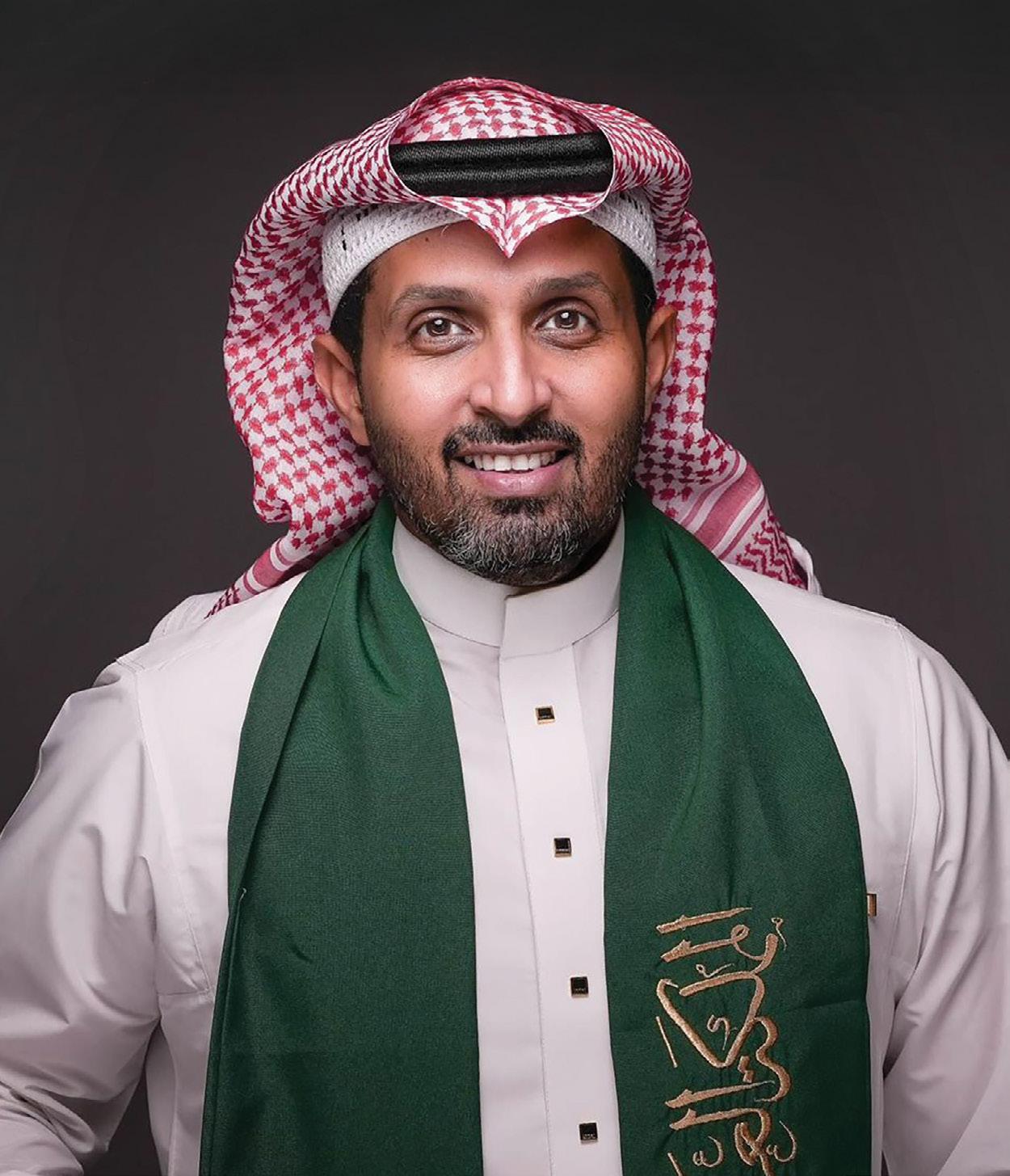
scalable, secure, and high-performance cloud infrastructure.
What partnerships are helping Etihad Salam accelerate innovation?
Etihad Salam has strategically established over 30 partnerships to enhance service quality and drive digital excellence across its operations. Among these key collaborations, the company has partnered with Elm to advance smart city innovations and digital transformation services, while working with EdgeNext to strengthen content delivery and network capabilities. Through its partnership with ACES, Salam delivers high-speed internet connectivity of up to 25Gbps in residential areas and collaborates with Genesys to implement AI-powered customer experience solutions. Additionally, the company supports SME growth through ServiceNow’s integrated digital workflows and strengthens
its digital infrastructure and connectivity through center3. These comprehensive partnerships underscore Salam’s unwavering commitment to innovation, sustainability, and facilitating sector-wide digital transformation.
What infrastructure developments has Etihad Salam undertaken to support nextgen technologies?
Etihad Salam operates the Saudi National Fiber Network (SNFN), a 17,000-kilometre independent fiber optic backbone connecting major cities. This network supports massive bandwidth capacities and is designed for high reliability and scalability. Salam also runs advanced data centers and international cable systems, which are being integrated with center3’s infrastructure to enhance regional connectivity and support emerging technologies like 5G, AI, and IoT.

SOPHOS CEO JOE LEVY OUTLINES HOW AI-DRIVEN CYBERSECURITY, DEEP LEARNING, AND VIRTUAL CISO MODELS HELP UAE BUSINESSES INNOVATE SECURELY AND SCALE CONFIDENTLY
BY NEESHA SALIAN
How does Sophos’ approach align with the UAE Cybersecurity Strategy 2025 and support the country’s goal of doubling the digital economy’s GDP contribution by 2032?
Sophos’ mission is closely aligned with the UAE Cybersecurity Strategy 2025, which aims to create a secure and resilient digital environment that enables innovation and
economic growth. Our role is to ensure organisations of all sizes and security maturity have access to strong cybersecurity defenses.
We’re investing locally with a new UAE data centre to keep sensitive data incountry, ensure compliance, and deliver low-latency services that protect critical infrastructure. Through our AI-driven
platform Sophos Central, and 24/7 managed detection and response (MDR) and other security services, we raise the security baseline across core industries in government, finance, manufacturing, and more.
This supports the country’s goals to double the digital economy’s GDP contribution by 2032, as secure systems build trust in digital platforms and enable safe adoption of e-government, fintech, and smart city initiatives. Additionally, our investments in skills development and partnerships equip UAE organisations with access to world-class expertise and scalable solutions. For Sophos, this isn’t
IS A BUSINESS ENABLER AND AN ESSENTIAL COMPONENT OF RESILIENCE AND TRUST. EMBEDDING CYBERSECURITY INTO DIGITAL PROJECTS FROM THE START, WHETHER CLOUD MIGRATIONS, AI DEPLOYMENTS, OR CUSTOMER SERVICES, REDUCES RISK, AVOIDS COSTLY REWORK, AND PROTECTS AN ORGANISATION’S REPUTATION.”
resolution of incidents and adaptive defenses that evolve alongside attacker tactics, protecting against ransomware, phishing, and advanced persistent threats in real time, while strengthening operational resilience.
How does the virtual CISO model address the dual challenge UAE organisations face, meeting regulatory requirements while dealing with a shortage of cybersecurity talent?
Our virtual CISO vision, exemplified by our CISO Advantage project, makes the knowledge and experience of a CISO accessible to organisations that otherwise lack leadership, through AI and partnerdelivered expertise. For organisations that already have a CISO, it provides a more efficient, integrated platform for managing risk.

just about defending against threats, it’s about enabling digital transformation and helping the UAE achieve its longterm economic vision.
In what ways does Sophos’ AI-native platform leverage deep learning and GenAI to protect organisations against ransomware and other evolving cyber threats?
Sophos products and the Sophos Central platform combine deep learning, GenAI, and Agentic AI to stop threats earlier, respond faster, and help defenders excel. Deep learning models, trained on global threat intelligence, detect malicious files and behaviors that traditional signatures miss, helping block zero-day malware and ransomware early in the kill chain.
GenAI strengthens detection and response by correlating alerts across multiple layers, summarising complex attack chains, and creating actionable insights for analysts, reducing alert fatigue and accelerating investigations. Agentic AI takes this further by fully performing investigations and threat hunts, which can then be reviewed by human analysts. By blending automation with humanled response, organisations gain faster
The real gap in cybersecurity isn’t just tools, it’s strategy. Many organisations don’t know where they’re vulnerable, what to prioritise, or how to measure progress toward continuous improvement. Agentic AI can surface misconfigurations, recommend policy changes, assess risk, apply compliance guidance, and automate basic decisions that typically require security leadership.
This approach ensures UAE organisations can meet sector-specific regulations while improving overall security posture. CISO Advantage provides continuous monitoring, policy updates,
and proactive threat intelligence, helping businesses move beyond compliance toward real resilience. It embeds traditional CISO expertise into an AI-driven platform, delivered with human support, empowering businesses to operate securely and confidently.
How can leaders balance innovation with security in today’s digital economy?
Security is a business enabler and an essential component of resilience and trust. Embedding cybersecurity into digital projects from the start, whether cloud migrations, AI deployments, or customer services, reduces risk, avoids costly rework, and protects an organisation’s reputation.
A secure-by-design approach, supported by AI-powered threat detection, zero-trust models, and automated compliance checks, enables organisations to move faster while staying protected. Collaboration between IT, security, and business teams embeds risk management into strategic decision-making.
WE’RE INVESTING LOCALLY WITH A NEW UAE DATA CENTRE TO KEEP SENSITIVE DATA IN-COUNTRY, ENSURE COMPLIANCE, AND DELIVER LOW-LATENCY SERVICES THAT PROTECT CRITICAL INFRASTRUCTURE
Leaders should invest in upskilling employees, leveraging managed services to address talent shortages, and engaging trusted cybersecurity partners to scale defenses. By building trust and resilience into every stage of innovation, security becomes a catalyst for sustainable digital growth, allowing leaders to innovate confidently while maintaining strong defenses in a competitive digital economy.
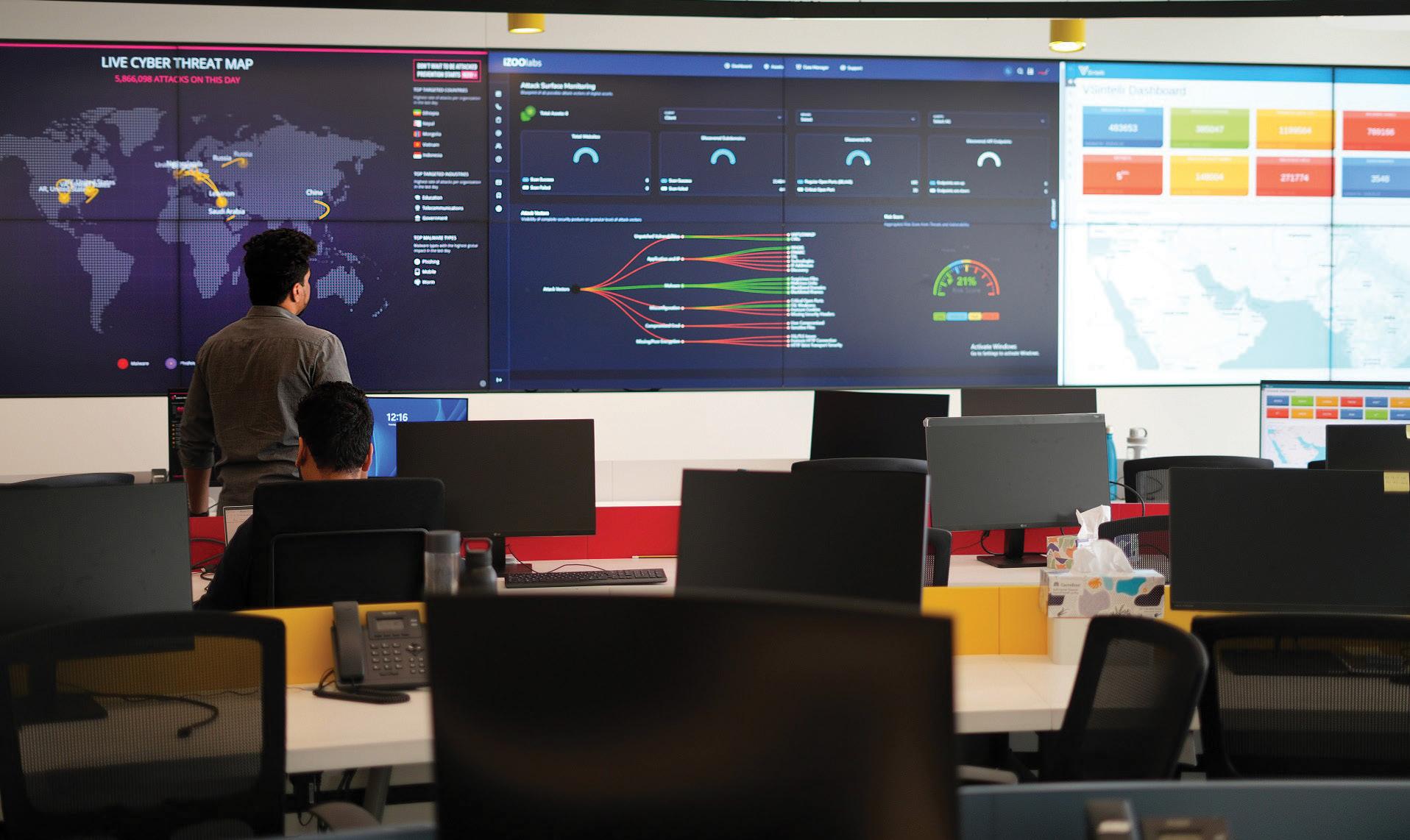
COO ASHOK CHANDRASEKHARAN OUTLINES
BY NEESHA SALIAN
Founded in 1992, Paramount has grown into one of the region’s leading pure-play cybersecurity firms. Headquartered in the UAE, the company operates across seven countries and supports over 350 clients spanning government, banking, healthcare, telecom, retail, and energy. Its 550 cybersecurity professionals deliver services ranging from next-generation SOC operations and data governance to AI-enabled risk management, helping organisations build resilience in an era of fast-changing digital threats. As cyberattacks grow more sophisticated and the Middle East accelerates its digital transformation, businesses are under pressure to protect critical data and infrastructure. Here, Ashok Chandrasekharan, chief operations officer of Paramount, explains
the most pressing risks facing UAE and GCC businesses, how the company is adapting to artificial intelligence (AI)-powered threats, and the role the company plays in securing both government and private ecosystems.
Cybersecurity threats are evolving rapidly in the Middle East. What are the most pressing risks businesses in the UAE and wider GCC face today?
We live in a time when every business relies on advanced technology and hackers know it. In places like the UAE and the wider GCC, digital transformation has moved faster than security practices, making the region a prime target. Cyberattacks have evolved; it’s no longer just about breaking into systems. Now, it’s about exploiting trust, speed,
and the complex web of interconnected networks we depend on.
With the emergence of AI, the game has changed completely. These aren’t the slow, predictable threats of the past. AI-powered attacks can learn and adapt in real time, unleashing precise, high-speed intrusions that are unlike anything we have dealt with before.
Supply chain attacks are one of the biggest risks. Hackers go after trusted vendors, cloud services, or ERP systems to quietly slip in. We’ve seen a sharp rise in data exfiltration, ransomware, and credential sales on the dark web. Ransomware incidents alone are rising 32 per cent in the UAE and 58 per cent across the Gulf, with industries like healthcare, telecom, and oil being hit the hardest. The average cost of a breach in
AI WILL STRENGTHEN GOVERNANCE, WITH GOVERNMENTS SETTING STANDARDS FOR PRIVACY AND ETHICS. BUSINESSES MUST QUICKLY ADAPT, EMBEDDING COMPLIANCE INTO RISK STRATEGIES.”
this region is around $8.05m, almost double the global average.
Phishing and social engineering remain the most common entry points, accounting for 98 per cent of successful attacks. In 2024 alone, weak passwords and risky public Wi-Fi habits caused several incidents. Every day, we see about 500 alerts, 70–80 of which turn into real threats. Most are phishing or insider-related, especially in finance and government sectors. With the region facing about 10 per cent of all global cyberattacks, smarter AI-powered detection tools and employee training are no longer optional.
Paramount has been in the cybersecurity space for decades. How has your approach adapted to new technologies like AI-driven threats and cloud security?
For 30 years, Paramount has grown from tackling basic tech threats to securing complex business ecosystems where one breach can stop everything. Today, we support more than 350 clients across seven countries with a team of 550 experts.
The shift to cloud computing brings scalability and speed, but it also opens misconfigurations and access points that attackers exploit. Meanwhile, AI-driven attacks are getting faster and more sophisticated, slipping past traditional defenses. That’s why at Paramount we use a layered defense strategy: conditional access policies, rolebased controls, and EDR/XDR solutions for hybrid environments.
We also apply AI across SIEM, IDS/IPS, and DLP for behaviour monitoring and rapid automated responses. This reduces false positives and lets us respond to serious incidents in minutes. Our comprehensive approach is formalised in the Paramount AI Framework, built on four pillars: AI governance, Securing AI, AI-driven cybersecurity, and data/integration security.
The framework addresses emerging risks like model poisoning while ensuring compliance with global regulations. We recently presented it at the Gartner Security and Risk Management Summit, where it was recognised as a blueprint for resilience in an
AI-driven future. Supported by a regional cybersecurity market projected to grow from $3.27bn in 2025 to $5.87bn by 2030, this approach has helped us sustain 30 per cent growth.
With Dubai pushing digital transformation across government and private sectors, what role do you see Paramount playing in securing this ecosystem?
Governments across the GCC are at the forefront of AI adoption, with the UAE standing out under its ‘We the UAE 2031’ vision. As national infrastructure and public services digitise, securing such a connected ecosystem demands advanced capabilities.
Paramount provides those capabilities with more than 100 SOC analysts working 24/7, proactive risk assessments, employee training, and digital risk protection. We align with DESC (Dubai Electronic Security Center) and CREST certifications, which validate SOC performance and incident response against international benchmarks. Our impact is tangible. We helped a key government agency cut response times to 15–20 minutes and shielded a leading financial institution from phishing and DDoS attacks during a ransomware spike. By integrating UAE security entities into our operations, we ensure faster threat intelligence sharing across sectors.
There’s growing awareness about data privacy and compliance in the region. How are you helping clients stay ahead of regulations while protecting their assets?
At Paramount, privacy isn’t just compliance — it’s a foundation of trust. We were the first in the region to offer end-to-end privacy solutions integrating legal consulting, advanced technologies, and automation. Our experts hold more than 30 globally recognised credentials, including CISSP, CISM, ISO 42001, and ISO 27701.
We provide a single-window GRC model, giving top management real-time visibility of risks. Beyond corporates, we also run awareness sessions at schools and universities to equip young people with knowledge

of online threats, responsible digital behaviour, and privacy best practices. Building this culture early is key to long-term resilience.
Share some incidents that stood out for Paramount.
We handle hundreds of thousands of alerts every year, most contained within hours. Our average response time is under 15–20 minutes for critical cases.
One case involved a retail chain with 150 branches across 10 countries. A credential leak exposed sensitive customer data, traded on the dark web. We traced the breach to internal systems, not consumer negligence, helping the client understand and fix the real vulnerability.
In another instance linked to a state actor, we traced malware back to its source and neutralised it with minimal disruption to national critical infrastructure. For a banking client, we cut detection and response times from months to just days, protecting sensitive financial data.
Looking ahead, what emerging cybersecurity trends should UAE businesses prepare for in the next three–five years?
AI will be both the biggest enabler and the biggest threat. Expect AI-driven phishing, vulnerability exploitation at scale, and sprawl attacks across interconnected cloud systems.
On the other hand, AI will also strengthen governance, with governments setting standards for privacy and ethics. Businesses must quickly adapt, embedding compliance into risk strategies. AI-enabled security platforms will drive real-time insights and automation, helping detect and eliminate threats with greater accuracy.

ACRONIS IS PUSHING THE BOUNDARIES OF CYBERSECURITY WITH ITS UNIFIED PLATFORM, INTEGRATING ENDPOINT PROTECTION, BACKUP, DISASTER RECOVERY AND XDR, SHARES ZIAD NASR , THE GM FOR ITS MIDDLE EAST OPERATIONS
BY NEESHA SALIAN
QWhat are you showcasing at GITEX?
We are bringing our unified cybersecurity and data protection platform under the theme ‘Take the headache out of IT security’. We will show how Acronis Cyber Protect Cloud brings together endpoint protection, backup, disaster recovery, patch management and XDR in one platform, giving partners
a simpler way to deliver security and resilience across complex environments. Also, we will focus on disaster recovery as a key part of that story demonstrating how partners can use built-in DR capabilities, including cross-border and multicloud recovery options, to keep businesses running even during major disruptions or regional outages. We are also highlighting our co-managed security model,
which allows partners to offer 24/7 protection without having to build and staff their own SOCs. This approach helps them meet rising customer expectations while keeping costs and operational overhead under control.
What emerging technologies are you focusing on this year?
We’re focused on expanding how AI is
WE ARE FOCUSED ON SIMPLIFYING CYBERSECURITY, SCALING OUR PARTNERS, AND EXPANDING OUR INFRASTRUCTURE IN THE REGION. THE GOAL IS TO GIVE PARTNERS A PLATFORM THAT MAKES IT EASIER TO MANAGE COMPLEX ENVIRONMENTS WHILE SUPPORTING PROFITABLE GROWTH.”
used across detection, response and automation. With attackers now using generative AI for phishing, malware and impersonation, we’ve strengthened our behavioural analysis and machine learning models to catch these threats faster and more accurately.
Disaster recovery is another key area, especially with the launch of new geo-redundant options and upcoming support for Microsoft Azure as a DR target. We’re also developing more flexible immutable storage and strengthening zero trust enforcement across cloud and endpoint environments. These are critical as remote work, OT exposure, and compliance demands continue to reshape how and where businesses need to stay protected.
What are the top trends shaping your industry this year?
The industry is experiencing a shift toward proactive, intelligence-led protection. AI is pushing threats to evolve faster, forcing both vendors and partners to rethink how they detect and respond. This is driving demand for platforms that combine security, backup, recovery and endpoint protection in one place, instead of relying on disconnected tools.
Platform consolidation is accelerating, and partners are becoming long-term advisors, guiding customers through zero trust adoption and compliance alignment. As platform consolidation continues, those who can simplify security while scaling services across multiple clients are in the strongest position to lead.
In relation to the trends you just mentioned, what is your outlook for the next year?
Demand for integrated protection will accelerate as organisations in the region face rising threats and tighter regulations. Our focus is to give partners the
tools to grow faster without adding complexity, strengthening our unified platform so they can scale services without the burden of multiple tools.
Co-managed security is gaining traction, and we are investing to help partners expand into that model with automation and 24/7 monitoring.
Disaster recovery will also be a priority, supported by new geo-redundant options and local infrastructure. Alongside this, we are enhancing our threat intelligence so partners can meet sovereignty requirements while improving detection and resilience.
How is the Middle East positioned compared to other global tech markets?
The region is a fast-moving innovation hub, driving major transformation in smart cities and digital government. But this progress brings an expanded threat landscape and growing compliance challenges. As attack sophistication increases, organisations are under pressure to align with global standards while protecting data sovereignty.
The channel is maturing quickly, with MSPs embracing platform-based service delivery, zero trust and AI-driven security as the foundation of their growth. We have invested in local infrastructure to ensure data residency and performance.
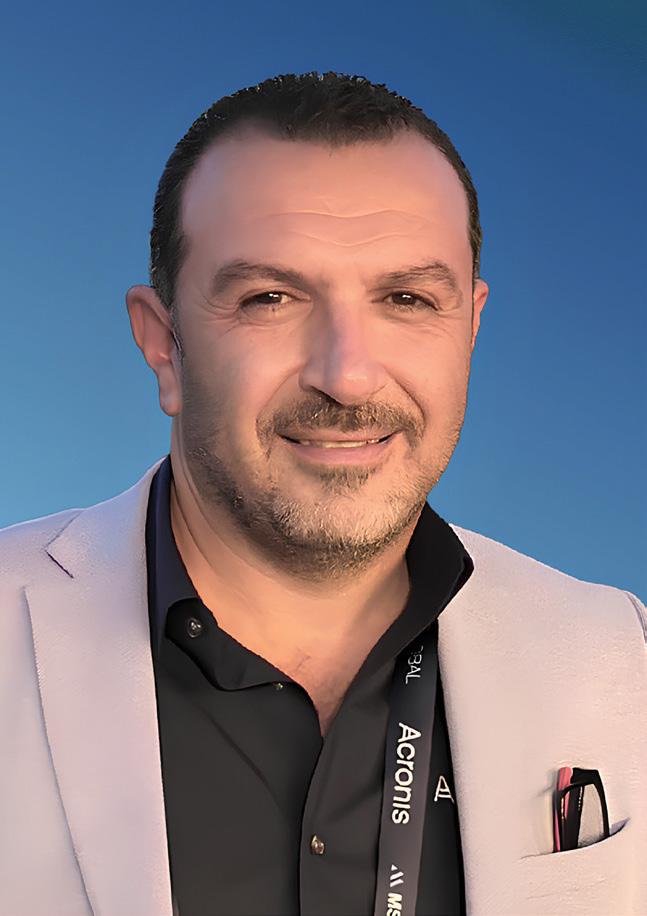
What are your plans for the next five years?
We are focused on simplifying cybersecurity, scaling our partners, and expanding our infrastructure in the region. The goal is to give partners a platform that makes it easier to manage complex environments while supporting profitable growth.
We will continue to strengthen our AIdriven capabilities so that automation and intelligent detection take on more of the operational burden. At the same time, we are expanding enablement with hands-on training, certifications and practical tools that help partners shift from reactive support to proactive resilience consulting.
Our long-term vision is clear: to ensure every partner in the Middle East can deliver enterprise-grade security with less complexity and greater resilience.
CO-MANAGED SECURITY IS GAINING TRACTION, AND WE ARE INVESTING TO HELP PARTNERS EXPAND INTO THAT MODEL WITH AUTOMATION AND 24/7 MONITORING

BY NEESHA SALIAN
How is AI adoption changing the landscape for businesses in the UAE and globally?
Omar bin Sultan Al Olama, Minister of State for Artificial Intelligence (AI), Digital Economy and Remote Work Applications, has said that the future of AI is inseparable from the future of the world, and the UAE is investing heavily in infrastructure and talent to position itself at the forefront of this transformation. It has already launched the world’s most advanced open-source reasoning model, announced that the National Artificial Intelligence System will serve as an advisory member of the UAE Cabinet from January 2026, unveiled the 5GW UAE–US AI Campus which is the largest outside the US, and confirmed that AI will become a formal subject across all grades beginning with the 2025–2026 academic year. These steps demonstrate how the country is enforcing its strategy for AI and advancing its vision of being recognised as a global frontier in digital transformation.
The same trend is visible around the world. A Stanford study found that 78 per cent of organisations adopted AI in 2024 compared with 55 per cent the year before. The global AI market is expected to grow from $189bn in 2023 to $4.8tn by 2033 - an increase of 25 times in a single decade. This pace of adoption is reshaping how companies compete, innovate and deliver value. AI is no longer a differentiator but a baseline requirement for business success. Organisations are using it to achieve significant gains in efficiency, decision-making and customer engagement. In the UAE, 80 per cent of professionals now use AI tools daily, up from 56 per cent in 2024, placing the country second worldwide after India. Job postings requiring AI skills doubled from 5,000 in 2021 to 10,000 in 2024, and AI is expected to contribute $100bn to the UAE’s GDP by 2030, accounting for 14 per cent of the total. However, this rapid shift also risks deepening the digital divide, with organisations lacking the infrastructure, talent and governance to
implement AI effectively at risk of falling behind. The business landscape is becoming increasingly polarised, and long-term success depends on agility, data maturity and responsible practices.
How is the UAE embedding sovereignty into its eco-tech infrastructure?
The UAE has taken a holistic approach to digital sovereignty. The launch of the UAE Artificial Intelligence and Advanced Technology Council (AIATC) and the National Strategy for Artificial Intelligence 2031 has provided clear governance, while initiatives like the UAE AI Charter and the Personal Data Protection Law establish robust ethical and compliance framework. These measures are supported by major investments in sovereign capabilities, including hyperscale national data centres and tailored offerings like the Core42 Sovereign Public Cloud, which already serves more than 50 customers across regulated and high-impact sectors. This platform enables organisations to adopt and deploy AI and cloud services while ensuring sensitive data remains under UAE jurisdiction.By investing early in sovereign cloud platforms, national compute infrastructure, and AI talent development, and by forming strategic partnerships with tech leaders like Microsoft, the UAE has shown how to balance openness with control.
How can sovereign cloud help organisations innovate while meeting regulations?
Compliance doesn’t have to slow innovation; when done right, it can accelerate it. A sovereign cloud provides organisations with a trusted foundation to innovate confidently, offering built-in controls, localised data residency, and adherence to national and sectorspecific regulations. This means businesses can scale AI, analytics, and digital transformation initiatives without worrying about regulatory missteps or cross-border data exposure. Core42’s Sovereign Public Cloud, for example, is built on Microsoft Azure, and combines Azure’s hyperscale infrastructure with Core42’s sovereign controls platform, Insight. This unique pairing gives organisations granular oversight of data flows,
THE
workloads, and compliance posture, while retaining the power, flexibility and scalability of a Microsoft’s global cloud ecosystem. By removing uncertainty around compliance, sovereign cloud empowers regulated industries such as banking, healthcare, energy, and government to focus resources on creating value rather than managing risk. Organisations can pilot and deploy emerging technologies like AI, machine learning, and advanced analytics faster because governance is embedded at every layer of infrastructure.
How are public sector organisations and regulated industries leveraging the sovereign public cloud today?
Public sector entities and regulated industries are using the sovereign public cloud to modernise mission-critical workloads while enabling compliance with some of the world’s most rigorous regulatory frameworks. Government entities are migrating citizen services and national platforms to sovereign infrastructure, ensuring privacy and resilience at scale, while banks are deploying fraud detection, risk management, and customer-facing systems in line with national regulations. In healthcare, sensitive patient data is securely analysed for AI-driven diagnostics and population health management, and in energy, companies are applying advanced analytics for predictive maintenance and sustainability programmes. Core42’s recent whitepaper with Microsoft highlights how sovereign cloud is becoming foundational to national resilience, outlining the policy, infrastructure, and innovation imperatives for AI adoption at scale. This vision is already in action, with organisations such as First Abu Dhabi Bank (FAB) migrating core banking workloads to boost agility and compliance. The Department of Government Enablement – Abu Dhabi (DGE) is leveraging the platform to support its goal of becoming the world’s first fully AI-native government by 2027, already migrating over 47 entities and powering 11 million daily digital interactions. This illustrates how Core42 and Microsoft are helping to drive national
how infrastructure sovereignty can drive both economic competitiveness.
What’s next for Core42’s sovereign public cloud?
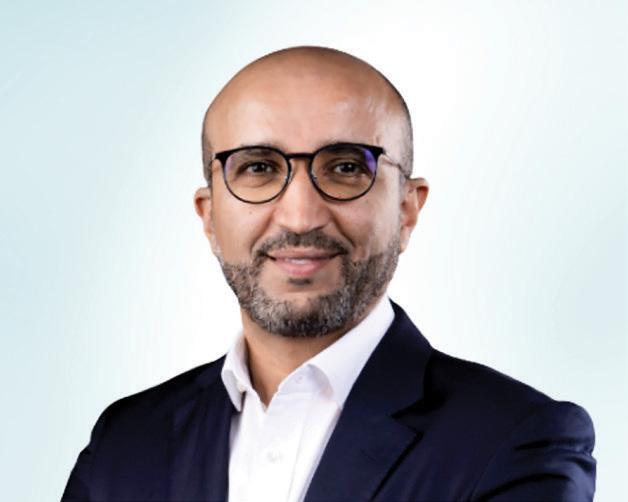
Mohammed Retmi
transformation and set a global benchmark for secure, AI-ready cloud adoption.
How do you see sovereign cloud shaping the UAE’s AI ambitions?
The UAE’s sovereignty-first strategy enables AI innovation to scale confidently, with infrastructure built to handle the massive data volumes, specialised workloads, and governance needs that define the AI era. By embedding security, compliance, and performance into every layer of the cloud, organisations can focus on experimentation, product development, and real-world deployment without compromising trust or resilience. Core42’s sovereign public cloud is already enabling this vision by providing enterprises and government entities with a trusted platform to run AI, machine learning, and analytics workloads at scale while allowing data to remain under UAE jurisdiction. In addition, our recently announced Signature Private Cloud, currently live in Customer Preview with general availability coming soon, delivers full digital sovereignty for sectors managing secret and top-secret data, including defense, national security, public safety, financial services, healthcare, and critical infrastructure. Together, these offerings form a comprehensive sovereign cloud portfolio that meets the full spectrum of organisational needs, from agile innovation environments to highly restricted deployments. The global sovereign cloud IaaS market, valued at $37bn, is forecast to grow at a 36 per cent CAGR to $169bn by 2028. As investment in sovereign infrastructure accelerates worldwide, the UAE’s blueprint stands out as a compelling example of
After being a first mover in the market, we are continuing to expand and innovate at speed. Our roadmap focuses on strengthening value-added services for customers, deepening collaboration with independent software vendors (ISVs), and enabling multi-cloud strategies so organisations can leverage the best global capabilities within a sovereign framework. We’re also enhancing our Insight controls platform to provide even greater visibility, compliance automation, and AI governance features, enabling customers to deploy advanced workloads securely and confidently. The sovereign cloud strategy we’ve developed with Microsoft in the UAE is unique, and hyperscalers are beginning to mirror it in other markets.
How do you envision the intersection of sovereignty, AI, and cloud shaping the region’s economy?
Sovereignty, AI, and cloud will converge to form the cornerstone of the region’s digital economy. AI adoption is accelerating faster here than in almost any other market, and sovereign infrastructure will enable nations to scale AI confidently, reduce digital dependency, and drive localised innovation that addresses regional priorities in sectors such as finance, healthcare, energy, and public services. This evolution will unlock new markets, business models, and opportunities in cybersecurity, compliance, and advanced analytics, while raising the standard of citizen services and private sector performance.
Realising this vision will require bold investments in infrastructure, talent pipelines, and data governance frameworks. Governments and enterprises must collaborate to build trusted, AI-ready platforms while enacting policies that balance innovation, ethics, and societal impact. Challenges remain, such as reducing foreign dependence, facilitating equitable access to skills and technology, and mitigating job displacement through reskilling programmes, but under the guidance of our wise leadership, I am confident in the region’s potential to become a global model for responsible, sovereign-driven AI growth.

CHANGING EXPECTATIONS AND EVOLVING TECHNOLOGIES ARE DRIVING ORGANISATIONS IN THE REGION TO DELIVER SEAMLESS, PERSONALISED, HYBRID DIGITAL AND PHYSICAL EXPERIENCES, SAYS NICK LOUMAKIS, REGIONAL MANAGER – MEA, LIFERAY
BY NEESHA SALIAN
QWhat’s driving the urgency to reimagine how digital services are delivered today?
Multiple factors are accelerating this shift. First, stakeholder expectations, from citizens and customers to employees and partners – have fundamentally changed. Users now expect faster, more intuitive, and personalised experiences across every interaction. Second, governments across the region
have made significant investments in digital infrastructure as part of long-term national visions like Qatar National Vision 2030 and Saudi Vision 2030, emphasising digital transformation as a pillar of economic diversification.
Post-mega event momentum, such as Qatar’s World Cup, have also amplified the need to sustain and evolve digital capabilities. At the same time, many organizations
are recognising that fragmented legacy systems and rigid workflows can no longer support these expectations. This has led to a shift toward platforms that unify services, enable real-time personalisation, and support seamless, intelligent user journeys. Delivering modern digital services is no longer optional; it is fundamental to public satisfaction, operational efficiency, and regional competitiveness.
How are organisations adapting to deliver hybrid experiences that span in-person and digital touchpoints? Organisations are increasingly adopting experience-centric models that ensure continuity across physical and digital channels. This involves redesigning traditional service
MANY
flows so users can begin a journey in one channel (For eg., a service centre) and complete it in another (For eg., a mobile app). To support this, organisations are integrating backend systems for real-time data access, leveraging APIs to connect services, and adopting platforms that enable unified front-end experiences. Many are also embracing modular and headless architectures to separate content from presentation, giving them the flexibility to tailor experiences across web, mobile, and emerging touchpoints without duplication.
What are the most common challenges organisations face in shifting to experience-led service delivery models?

Many organisations lack a clear digital strategy or a shared vision of what user-centric services should look like. Without strong leadership and alignment across teams it is difficult to prioritise experiencedriven outcomes. Shifting from process driven to experience-led delivery requires unified commitment to customer value across an organisation’s strategy, culture and ways of working. Technology can further complicate the shift. Legacy infrastructure limits integration and agility, while siloed systems and fragmented data restrict cross- functional collaboration and hinder the creation of seamless personalised journeys. In many cases, services remain built around outdated processes rather than real user needs, reflecting deeper gaps in digital mindset and organisational design.
How can tech platforms support personalised, scalable digital journeys across user segments?
Modern digital experience platforms support personalisation at scale through a combination of key capabilities. These include user segmentation and targeting, allowing
organisations to tailor content and services based on user profiles and behaviour. Modular architecture and multichannel delivery enable flexibility across web, mobile, and even physical environments like kiosks, without duplicating development effort.
Integration tools help unify data from disparate systems, creating a cohesive foundation for personalised interactions. Built-in content management and analytics allow teams to continuously optimise experiences in real time.
As organisations become more experience-focused, what metrics matter most to measure success?
Measuring success in experienceled service delivery is increasingly about simplicity, adoption, and meaningful impact. Key metrics include faster onboarding, increased adoption of digital services, and higher engagement across channels.
Organisations also track completion rates for core digital journeys, time to resolution, and repeat usage. In more advanced setups, sentiment analysis and feedback mechanisms help evaluate how well services are meeting expectations. Where relevant, conversion and retention rates provide insights into value delivery, especially in private sector use cases. Ultimately, the emphasis is on linking digital interactions to tangible outcomes like reduced operational costs, improved perception, and better service delivery.
What trends or behaviours will define the next phase of digital experience transformation in the region?
The next phase of digital experience will be shaped by increased adoption of AI, more flexible, API-driven architectures, and a shift toward greater user autonomy. We’re already seeing more experimentation with AI-driven personalisation, content generation, and automated service interactions. At the same time, organisations are building modular digital frameworks that allow them to integrate new capabilities without full platform overhauls. The focus is moving away from onetime transformations toward continuous, user-led iteration, where feedback loops and real-time data play a central role in how services evolve.

KARTIK TANEJA , HEAD OF PAYMENTS AT MASHREQ, EXPLAINS HOW REAL-TIME PAYMENTS ARE DRIVING INCLUSION AND EFFICIENCY, WHILE OUTLINING THE CHALLENGES AND INNOVATIONS THAT WILL DEFINE THEIR FUTURE
BY NEESHA SALIAN
Real-time and instant payments are becoming increasingly common globally. How do you see these platforms reshaping the way individuals and businesses interact with financial services in the UAE? Real-time payments (RTPs) enable a new method of payment that has been
growing at an incredible pace across the world. In the UAE, Aani is our real-time payments scheme, similar to Pix in Brazil and UPI in India. Aani has significantly expanded capabilities, including transfers via mobile numbers, QR-code payments, request-to-pay functions, and increased transaction limits with settlement times of around 10 seconds.
The key benefit of RTPs has been their low cost, that has driven adoption in commerce by even the smallest of merchants. RTPs make it possible to have a viable commercial model for such merchants, typically using QR codes in place of expensive terminals. This also opens up a new channel – pay-by-bank – for online payments.

THERE ARE A FEW COMMON
THINGS
IN
MARKETS WITH THE MOST SUCCESSFUL RTP SCHEMES. IT’S EASY TO SEE THEIR IMPACT HAS BEEN IN THE LESS DEVELOPED AND MORE GEOGRAPHICALLY SPREADOUT; MARKETS SUCH AS INDIA, BRAZIL, THAILAND, AND – ARGUABLY – CHINA.”
What are the key opportunities that instant payment platforms create for financial inclusion and supporting underserved segments of the population?
There are a few common things in markets with the most successful RTP schemes. It’s easy to see their impact has been in the less developed and more geographically spread-out; markets such as India, Brazil, Thailand, and – arguably – China, with Alipay and Wechat Pay, which are also forms of real-time payments. The growth of RTPs has made commerce easier and more accessible in smaller towns and villages, where there are greater numbers of unbanked or underbanked customers. Mobile and digital adoption, and technologies such as RTPs, are creating positive impact on the financial wellbeing and literacy of hitherto underserved communities.
With rapid adoption comes challenges. What are the main operational or regulatory hurdles Mashreq and the broader UAE market face in scaling instant payment solutions?
We are still in the early stages of adoption for RTPs in the UAE. For example, we have
just crossed more than 100,000 transactions made in a month using a mobile number or email rather than an IBAN. Success would be when this number is in the millions. Addressing key technical challenges and the right mindset changes will lead us to this target. Firstly, RTPs should be ubiquitous – in other words, all banks and financial institutions must be onboard – and in this regard, we are mostly there. Secondly, I believe a common national QR standard would drive up adoption, a solution that is currently in progress. Fraud prevention is another important element, and upgrading security standards will enable greater trust in the system.
How are businesses leveraging instant payments to drive efficiency, innovation, and customer engagement, particularly in sectors like retail, e-commerce, and fintech?
We are driving the first leg of this massive change at this time – businesses are being signed up to accept RTP as payment – in fact, Mashreq was the first bank in this space. As this capability expands and both businesses and customers see the benefits, we expect to see massive adoption
The speed and efficiency of RTPs enables businesses to streamline their operations and simplify finances, enhancing both operational efficiency and customer engagement.
Looking ahead, what innovations or enhancements do you anticipate in instant payments over the next few years, and how is Mashreq positioning itself to lead in this evolving ecosystem?
THE SPEED AND EFFICIENCY OF RTPs ENABLES BUSINESSES TO STREAMLINE THEIR OPERATIONS AND SIMPLIFY FINANCES, ENHANCING BOTH OPERATIONAL EFFICIENCY AND CUSTOMER ENGAGEMENT
We expect to see large-scale acceptance of RTPs in business-to-business transactions using this method over time. Even large-ticket consumer payments, such as rental payments or school fees, will transition from cheque payments to Aani. Mashreq has played a pioneering role in driving this change; we were amongst the first banks to launch this capability, and have already registered a significant share of clients for Aani payments. We have been running promotions to raise awareness of and popularise RTPs, and will continue to lead the charge in this field.

BY NEESHA SALIAN
What are you showcasing at GITEX Global 2025.
This year has been a reality check for AI. After years of hype, rubber has hit the road, and now a recent MIT report has found that 95 per cent of AI pilots fail. This has forced business leaders to confront the uncomfortable truth: the barrier isn’t the algorithms, but the data powering
them. And it’s not just about quality, it’s about readiness. At GITEX Global, we’ll be shining a spotlight on this distinction between high-quality data and AI-ready data. More importantly, we’re demonstrating how to solve it. With our Intelligent Data Management Cloud and CLAIRE AI, we’re showing how organisations can use AI to manage and prepare their own data, turning
what’s often a stumbling block into a foundation for AI success.
What emerging technologies are you focusing on this year?
Agentic AI is the big story of 2025, with the potential to modernise virtually every business process. But many vendors risk narrowing the opportunity by chasing isolated use cases, which can create silos and limit scalability. Our approach is different. We’re applying agentic AI across our services, including data governance, to make sure enterprises don’t just experiment with agents, but actually trust and scale them across the organisation.
AGENTIC AI IS THE BIG STORY OF 2025, WITH THE POTENTIAL TO MODERNISE VIRTUALLY EVERY BUSINESS PROCESS. BUT MANY VENDORS RISK NARROWING THE OPPORTUNITY BY CHASING ISOLATED USE CASES, WHICH CAN CREATE SILOS AND LIMIT SCALABILITY.”
What are the key trends transforming your industry at the moment?
AI’s growing pains have shown us that data management is the missing link. That’s why we’re focused on agentic AI, with governance as a foundational application, acting as an executive layer overseeing the entire data estate. It can discover and classify data autonomously, enforce compliance policies in real time, track lineage, and ensure quality and interoperability across platforms. This doesn’t just make innovation possible, it makes it safe and scalable. It builds transparency into compliance, protects customer data, and ensures every decision is grounded in trusted information. Simply put, governance agents make agentic AI viable in the enterprise.
In relation to the trends you just mentioned, what is your outlook for next year?
This year has highlighted the hard realities of AI experimentation. Many pilots underperformed, but rather than dampening enthusiasm, it’s shifted the conversation to the fundamentals. Organisations now recognise that success hinges on clean, governed, trusted data. We expect

2026 to be the year where early adopters begin showcasing tangible results, proving that the right foundation unlocks real value. Those successes will undoubtely create a ripple effect, accelerating adoption across the region.
How is the Middle East positioned compared to other global tech markets?
Far from being a follower, the Middle East is setting the pace in AI. Governments have been bold in their vision, and it’s paying off. The UAE’s decision to opensource Falcon has fuelled globally relevant innovation tailored to local needs. Saudi Arabia is making massive investments through its National Strategy for Data & AI, with ambitions to rank among the world’s top ten AI nations by 2030. Startups like Humain are building on these foundations to connect capabilities across regions, while keeping data sovereignty intact. Meanwhile, Qatar is aligning its AI efforts with its National Vision
2030 and Digital Agenda 2030. Together, these moves position the region as a serious player on the global stage.
What are your plans for the next five years? Looking ahead, we see a future where AI is woven into every business process, and trusted data is the fuel that makes it possible. Our strategy is to keep building on the region’s strong government support by tailoring solutions that respect local regulatory and cultural contexts, while ensuring global standards of scalability and security. We believe agentic AI will transform how organisations operate across every service, and Informatica’s role will be to power those transformations with reliable, governed data. In five years’ time, we expect to look back and see data not just enabling AI, but delivering measurable returns that include optimising costs, driving competitive advantage, and unlocking innovation at scale.

MOHIT BECTOR, COMMERCIAL HEAD – UAE AND GCC, EXPLAINS HOW ASUS IS EQUIPPING GULF ENTERPRISES WITH ARTIFICIAL INTELLIGENCE (AI)-READY DEVICES, ENERGY-EFFICIENT SOLUTIONS AND SMART INFRASTRUCTURE TO SUPPORT HYBRID WORK AND DIGITAL TRANSFORMATION
BY NEESHA SALIAN
QMany Gulf-based organisations are focusing on hybrid work and smart infrastructure. How is ASUS tailoring its products and services to meet these evolving workplace demands?
Hybrid working has now become a new standard for most organisations here in the Middle East. Especially during the pandemic, employees need a reliable device that they can work on no matter where they are. Our products have been designed with hybrid work in mind, portable and powerful. Our ExpertBook line was made with durable materials and undergoes military-grade testing to ensure they’ll survive in any working environment. Along with that, they’re built to run AI applications natively, including Microsoft Copilot and our own exclusive ASUS AI ExpertMeet, have long battery life, and enterprise-grade security. We’ve even included spill-resistant keyboards
to ensure that employees can effectively use these devices as portable workstations that can make them productive.
How is ASUS helping companies in the Middle East adopt more efficient and sustainable IT solutions, especially as digital transformation accelerates in the region?
We’ve set a target for achieving net-zero emissions by the year 2050. In line with this, we have developed energy-efficient products that are EPEAT and ENERGY STAR certified. These products were also sourced from sustainable materials and come in recyclable packaging. We create products that not only bring great performance but also reliability after years of use. Our devices are made with 100 per cent solid capacitors to make them last longer and come with modular and upgradable components, delivering a great ROI for companies. We are always ready to support companies
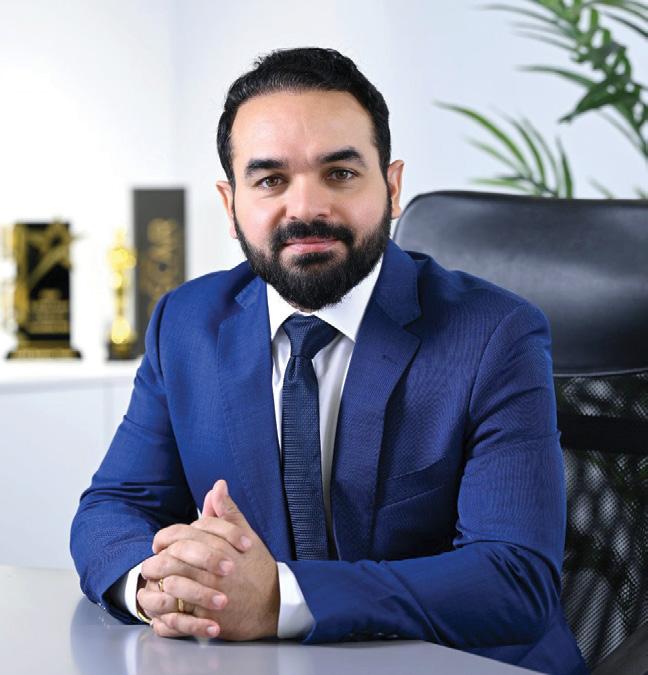
that want to embrace digital transformation while also being environmentally conscious.
With AI and advanced computing shaping the future of business, what role does ASUS see itself playing in enabling enterprises across the Gulf to stay competitive?
AI is a foundation of ASUS’s vision for the future of work, and this year, we’re seeing companies fully embracing how AI computing can help them stay productive. AI and advanced computing are reshaping industries as we speak, and ASUS is proud to support organisations in this transition. Across the Gulf, our AI-ready products enable companies to improve output and enhance collaboration. Through our key partners around the region, we are able to deliver our intelligent solutions to every sector that can benefit from them. For businesses, this means that they can easily scale up their operations when needed, allowing them to stay ahead of the competition and deliver better services to their customers.
WE’VE SET A TARGET FOR ACHIEVING NET-ZERO EMISSIONS BY THE YEAR 2050. IN LINE WITH THIS, WE HAVE DEVELOPED ENERGY-EFFICIENT PRODUCTS THAT ARE EPEAT AND ENERGY STAR CERTIFIED.”

OCTOBER 2025
CAMPAIGN SAUDI BRIEFING (RIYADH, KSA) Media & Marketing
FEBRUARY 2026
CAMPAIGN BREAKFAST BRIEFING (DUBAI, UAE) Ramadan Advertising & The Year Ahead
NOVEMBER 2025
CAMPAIGN BREAKFAST BRIEFING (DUBAI, UAE) Out of Home 2026
DECEMBER 2025
CAMPAIGN AGENCY OF THE YEAR MIDDLE EAST AWARDS (DUBAI, UAE)
